“Most people might be oppressed by such surroundings, with its silence and inhuman expanses… But he who seeks peace and quiet in Nature, undisturbed by human activity… will find here what he seeks… even although, beset in the ice, one is a plaything of the forces on Nature.”
~ Fridjof Nasen
Today we had plans to visit Cuverville Island and an area called Neko Harbour. Cuverville Island lies in the Errera Channel, between Ronge Island and Arctowski Peninsula. This small rocky island has vertical cliffs measuring 200m in elevation and is often called “The Forest of the Antarctic Peninsula” because of its extensive moss cover – it’s the most greenery you’ll see down here! Cuverville Island is home to the largest Gentoo penguin colony in the region (around 6,500 breeding pairs of the cute little guys) along with plenty of birdlife such as the Southern Giant Petrels, Kelp Gulls, Antarctic Terns, Snowy Sheathbills and South Polar Skuas – none of which have I learned to identify on sight yet though! The island is scattered with whalebones as well, which we had to be careful not to disturb.
Our zodiac group, Amundsen, was called first, and I must say, we are getting better at getting all our gear on – instead of taking nearly 20-30mins to get kitted up to get out the gangway, we have got it down now to less than 10 mins. Thermals, shirt, waterproof pants, Muck boots, Quark parka and PFD all going on quickly now. Also, due to the short nature of each excursion usually 1.5hrs to 3hrs, I have pared my EDC right down to the bare minimum to avoid carrying a backpack everywhere… and I should be fine unless we get unexpectedly stranded somewhere for an unspecified period of time – in which case I am right proper fucked. 😛
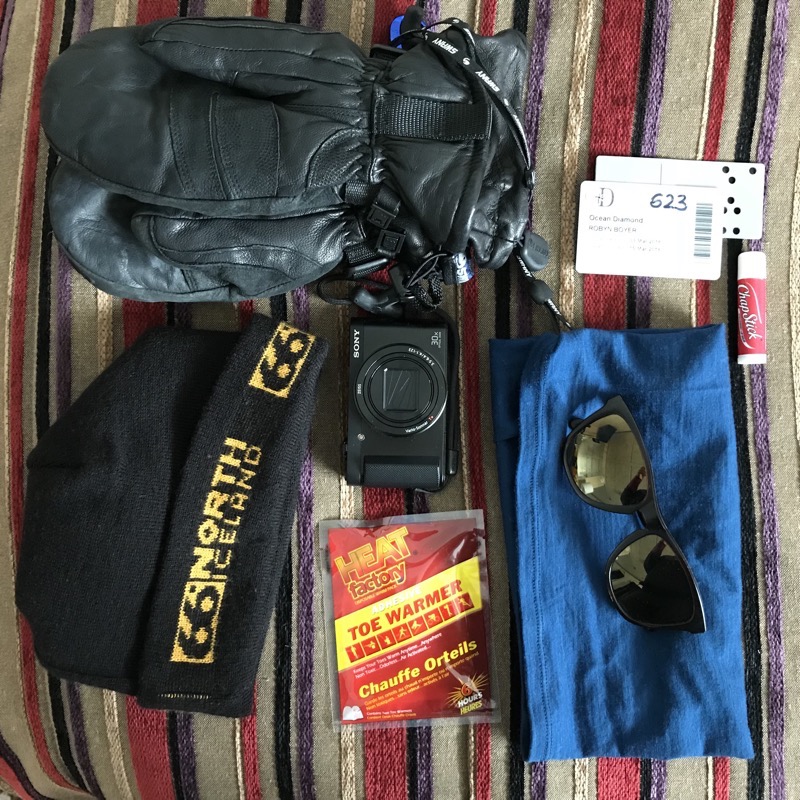
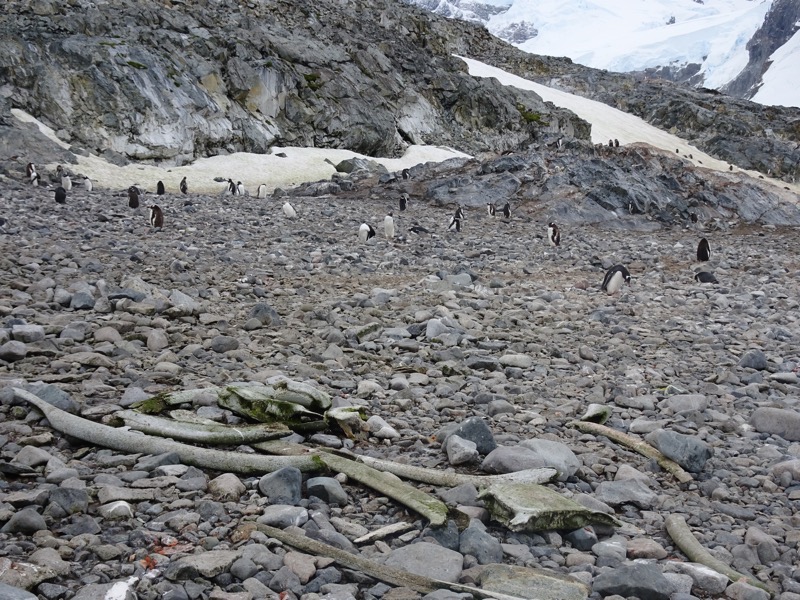
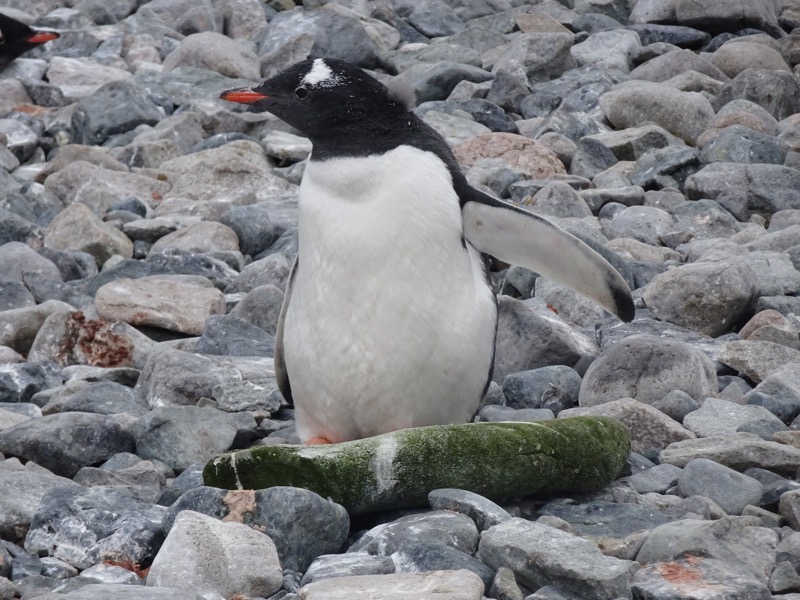
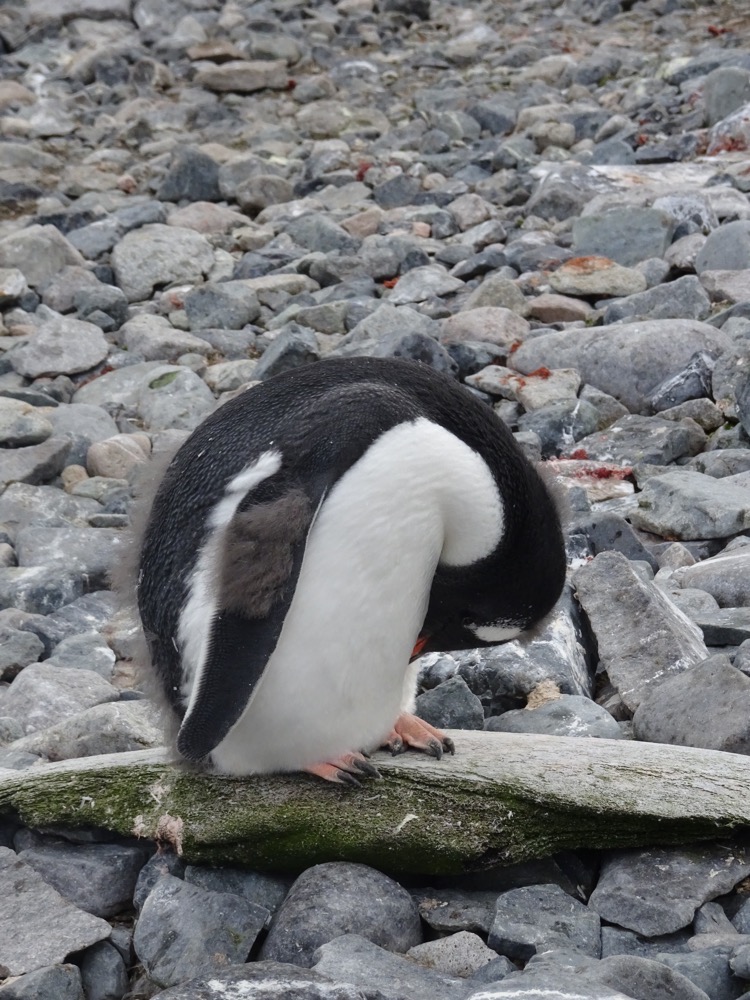
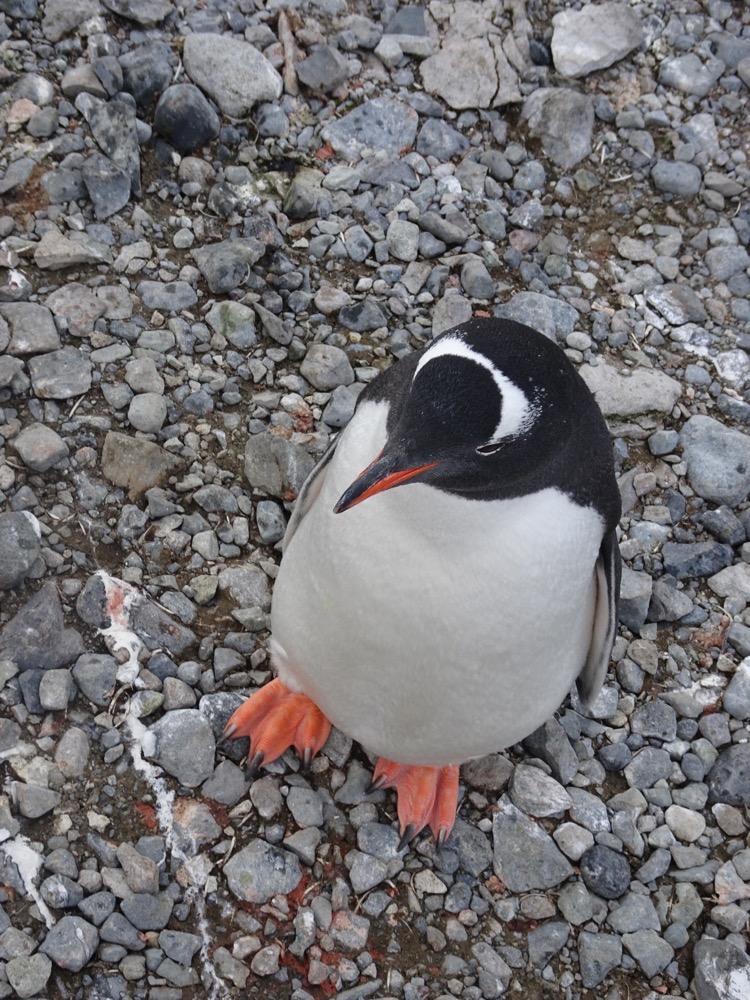
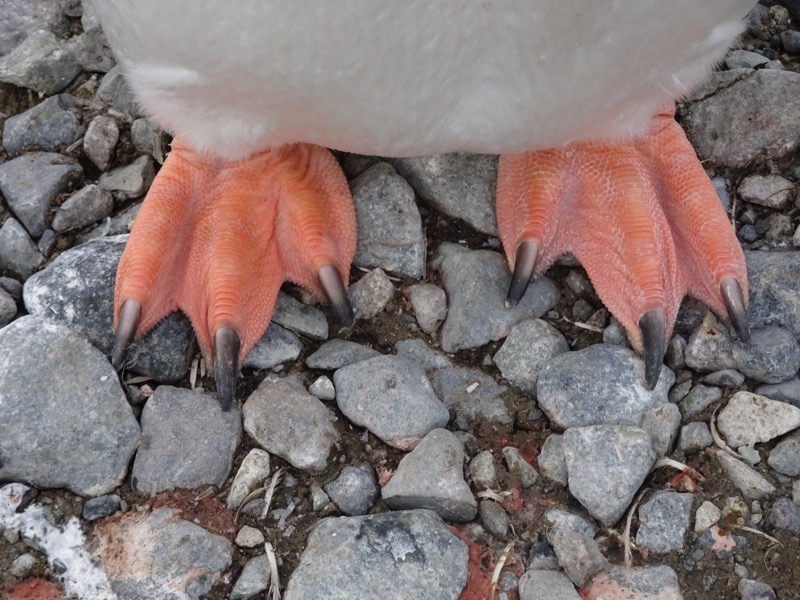
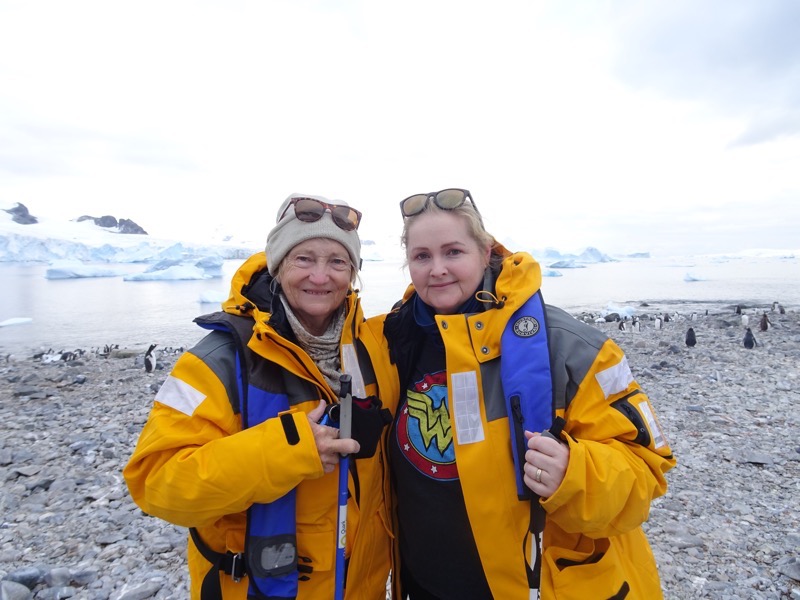 These guys are juveniles, going through the moulting process to shed all their baby feathers. They aren’t ‘waterproof’ while they have fluffy feathers all over them, and they can’t get into the water and learn how to swim properly until they have finished moutling.
These guys are juveniles, going through the moulting process to shed all their baby feathers. They aren’t ‘waterproof’ while they have fluffy feathers all over them, and they can’t get into the water and learn how to swim properly until they have finished moutling.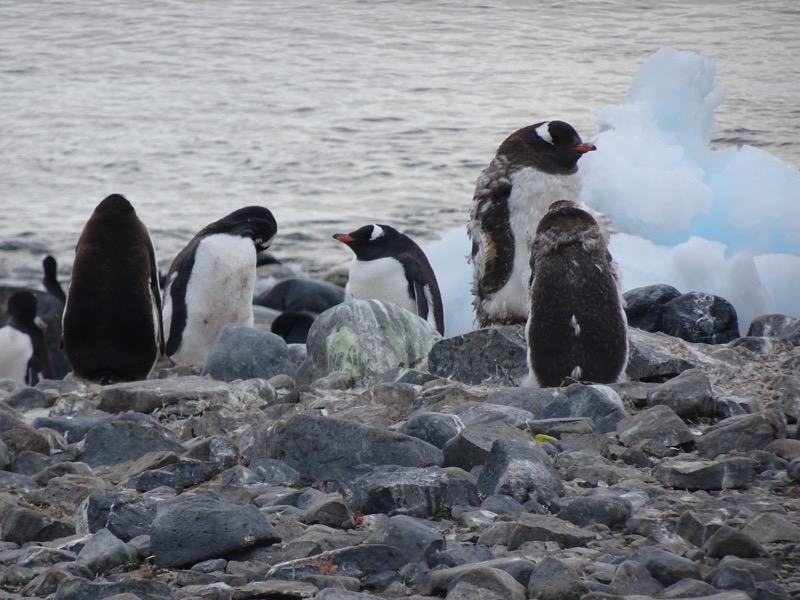
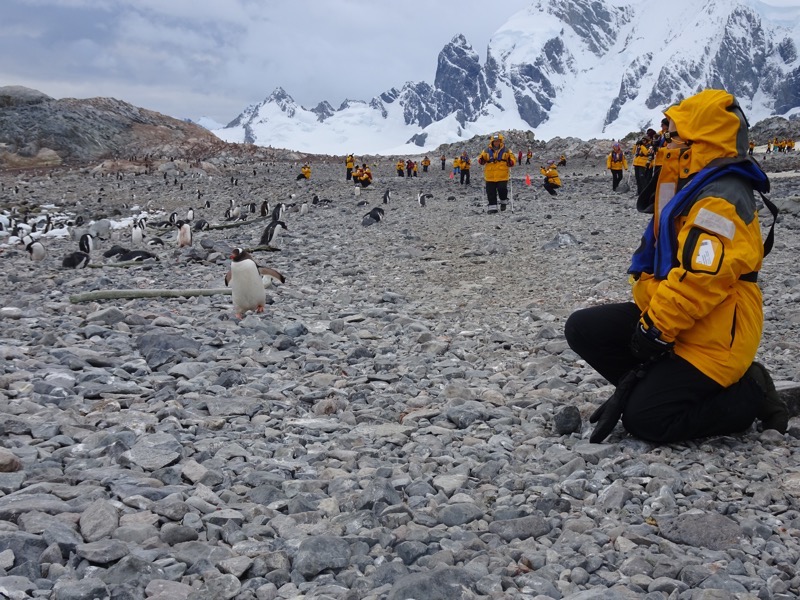
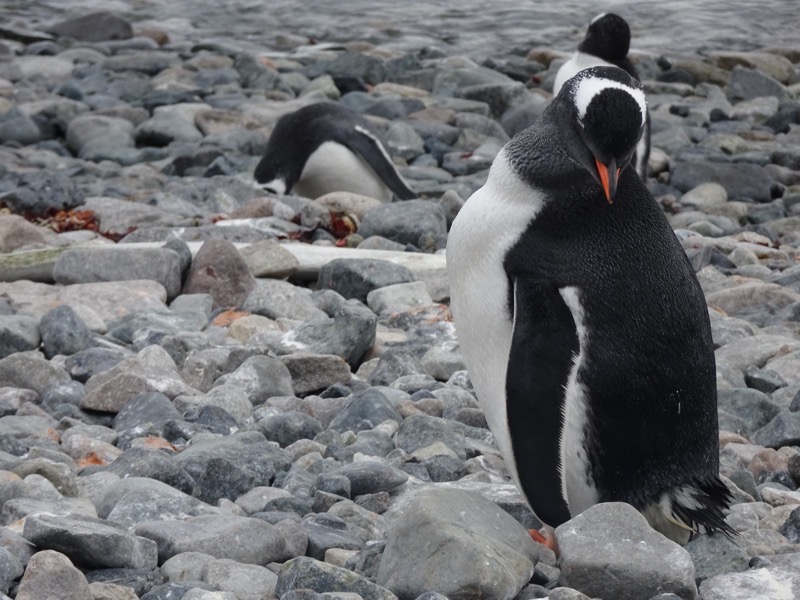 While we were here I took an opportunity to fly some colours for Lochac – I had hastily arranged to borrow a banner as I was packing to leave Brisbane and thankfully remembered to take it ashore… for Lochac and for Ynys Fawr!
While we were here I took an opportunity to fly some colours for Lochac – I had hastily arranged to borrow a banner as I was packing to leave Brisbane and thankfully remembered to take it ashore… for Lochac and for Ynys Fawr! 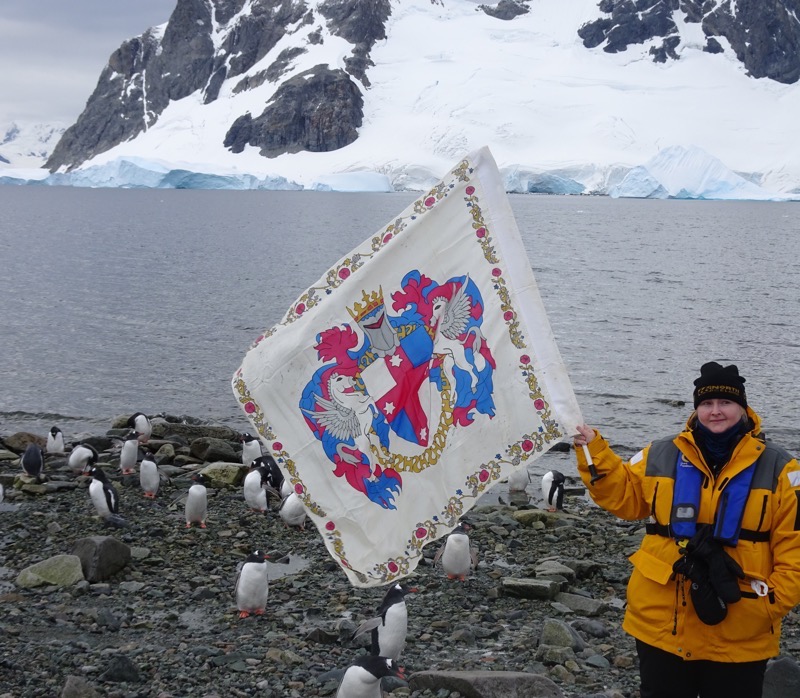
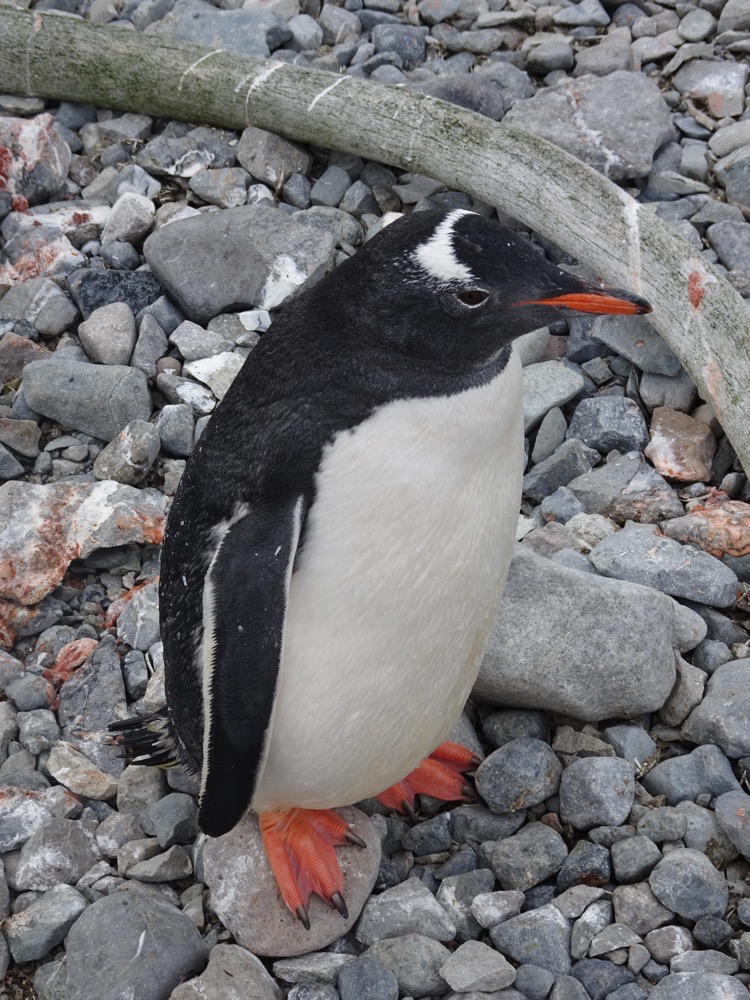
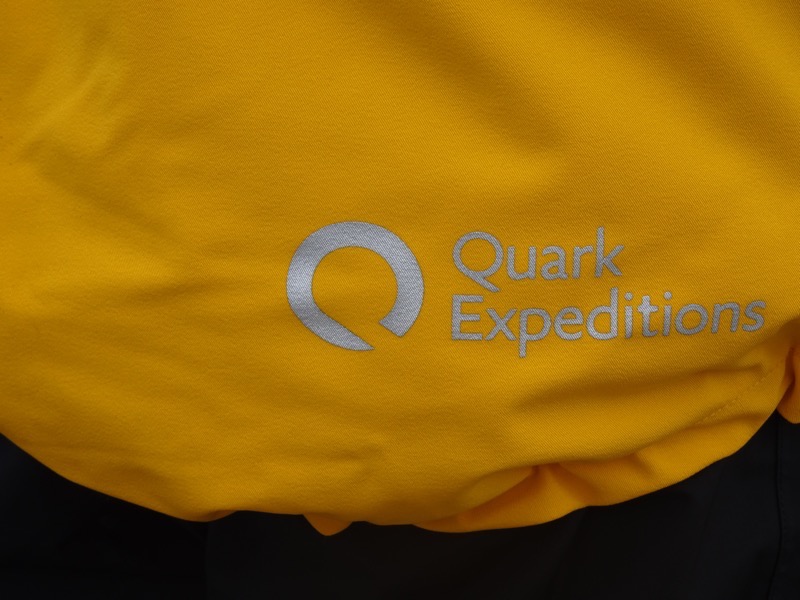 Cuverville Island in Paradise Bay is absolutely beautiful
Cuverville Island in Paradise Bay is absolutely beautiful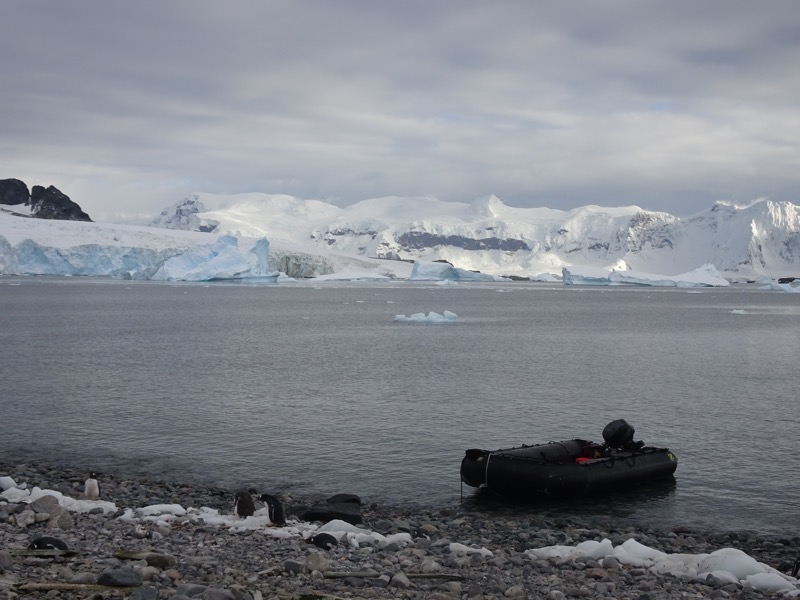
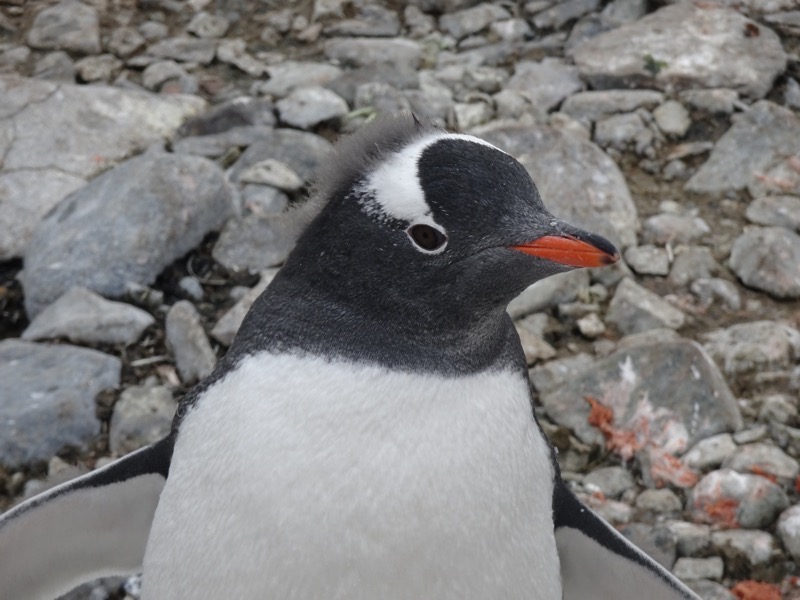
It’s a bit warmer here so you get algae growth in the ice near the water’s edge which is rich with nutrients from penguin guano. Photo by Leanne of her, ‘Penguin with Attitude’… he kept pecking at her boots.
Photo by Leanne of her, ‘Penguin with Attitude’… he kept pecking at her boots. Norm and Dany with some little friends in tow:
Norm and Dany with some little friends in tow: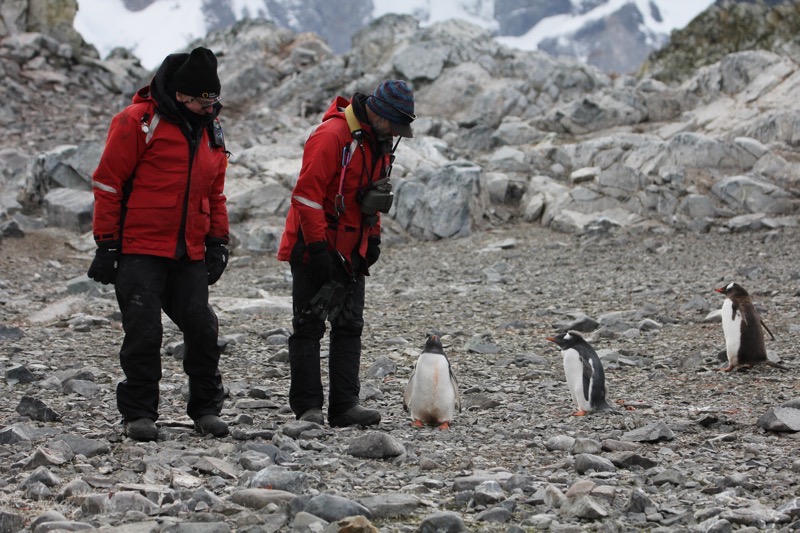 Photo by Leanne:
Photo by Leanne: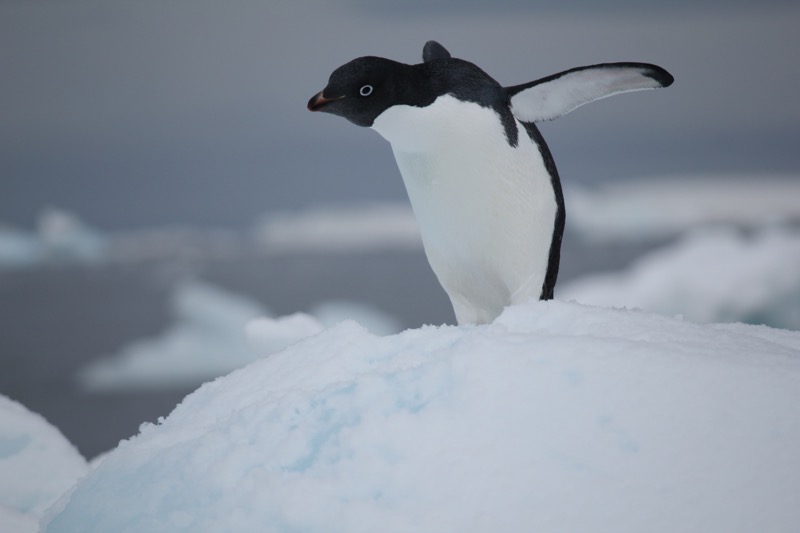 Photo of our friendly neighbourhood microbiologist, Ema. Taken by Pato:
Photo of our friendly neighbourhood microbiologist, Ema. Taken by Pato: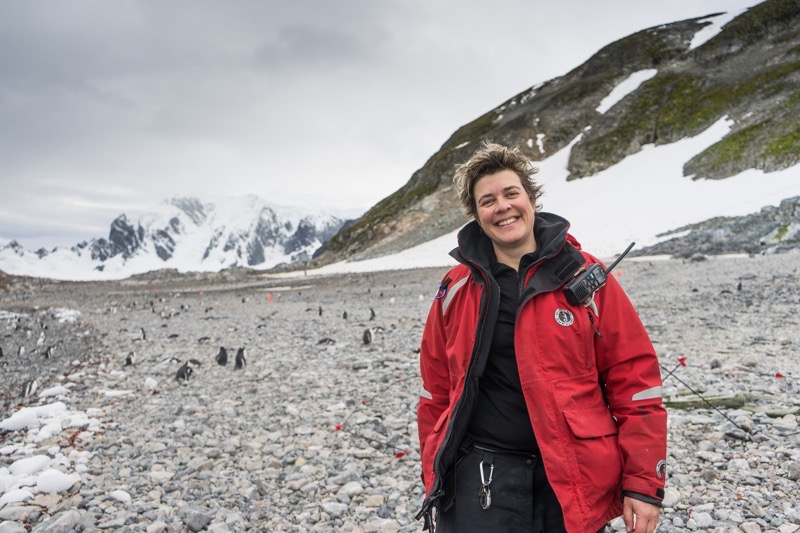
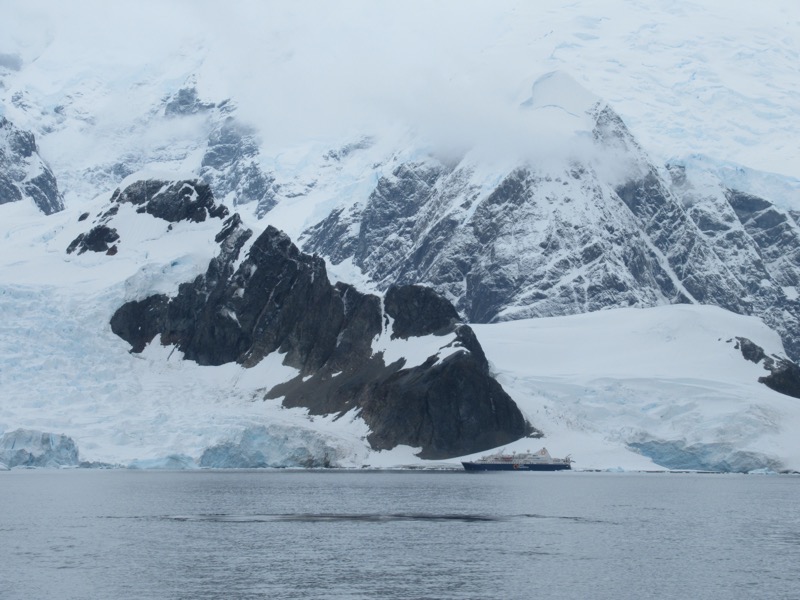 Some of the ‘rainforest’, photo by Tommy:
Some of the ‘rainforest’, photo by Tommy: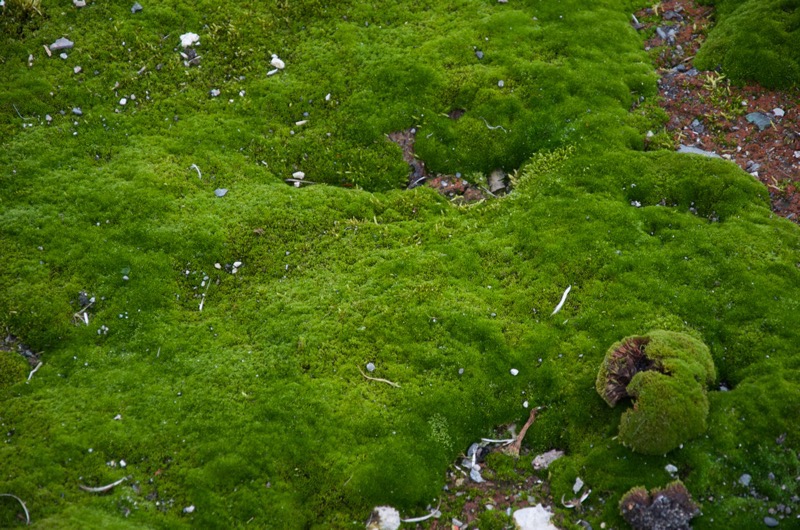
After that, it was our turn to switch with the Shackleton and Scott zodiac teams and head to the water while they came to visit with the penguins. They had us split into groups of Amundsen and Wild, Shackleton and Scott for the purposes of moving people about quickly and letting us know what our group would be doing next. It gets quite warm walking around on land in all this gear, but you tend to get real cold very quickly once you are sitting still in the zodiac, so it’s out with the beanies, neckwarmers and gloves quite smartly. Pato was our zodiac guide for this trip and he was… how do you say, a little more ‘confident’ than some of our other guides. By the time we had been in his boat for about ten minutes I was warning him, ‘No cracking donuts in the zodiac!’
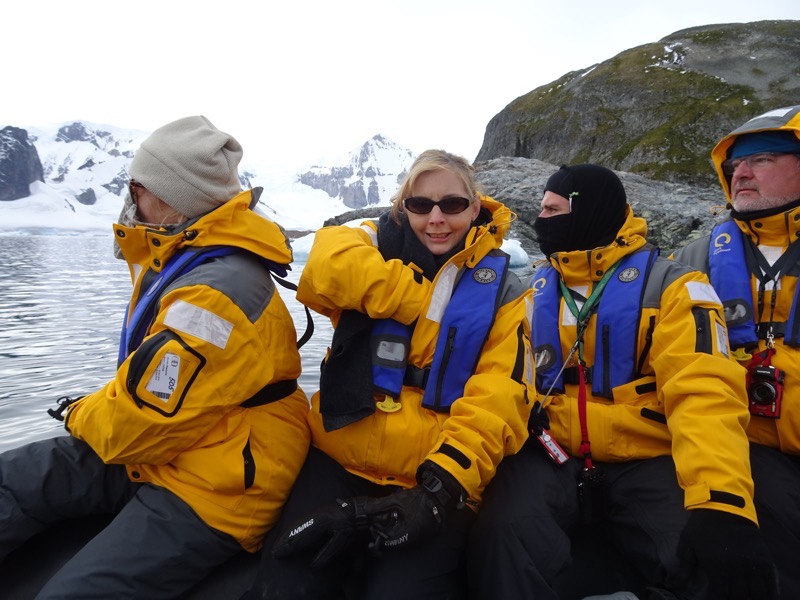
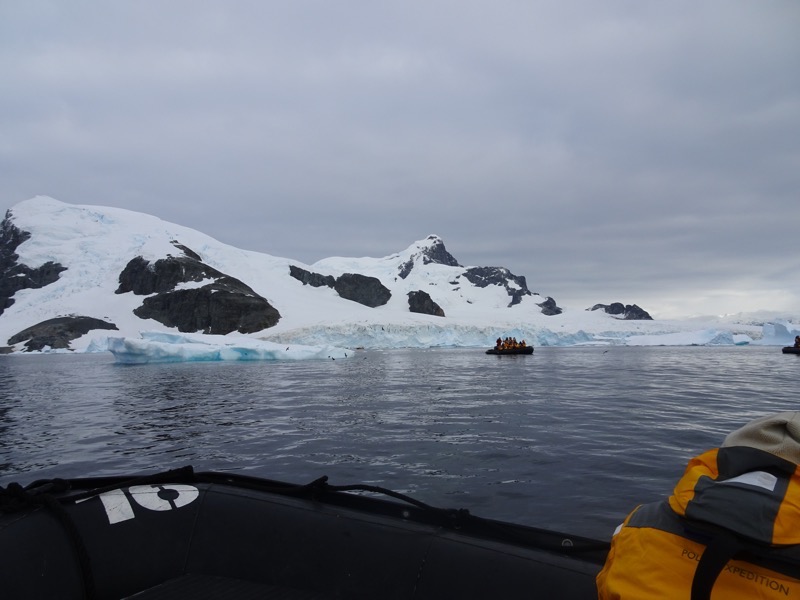 We tootled around the harbour for a bit but within moments came across the most unexpected and startling ‘David Attenborough Moment’… I had been talking to Trish just this morning about how cool it would be to see Orca hunting seals along a beach somewhere but wasn’t expecting to stumble onto leopard seals hunting the cute penguins that we had just been watching as they learned to swim. Leopard seals are opportunistic feeders, so they live on krill, fish, squid and small animals like fur seal pups and penguins. They have large canines which allow them to grab their prey but in the absence of ‘hands’, they resort to throwing and flailing their prey around in and out of the water, until chunks of flesh are ripped free so that they can then consume the smaller pieces. It was a bit gruesome to watch but absolutely fascinating.
We tootled around the harbour for a bit but within moments came across the most unexpected and startling ‘David Attenborough Moment’… I had been talking to Trish just this morning about how cool it would be to see Orca hunting seals along a beach somewhere but wasn’t expecting to stumble onto leopard seals hunting the cute penguins that we had just been watching as they learned to swim. Leopard seals are opportunistic feeders, so they live on krill, fish, squid and small animals like fur seal pups and penguins. They have large canines which allow them to grab their prey but in the absence of ‘hands’, they resort to throwing and flailing their prey around in and out of the water, until chunks of flesh are ripped free so that they can then consume the smaller pieces. It was a bit gruesome to watch but absolutely fascinating.
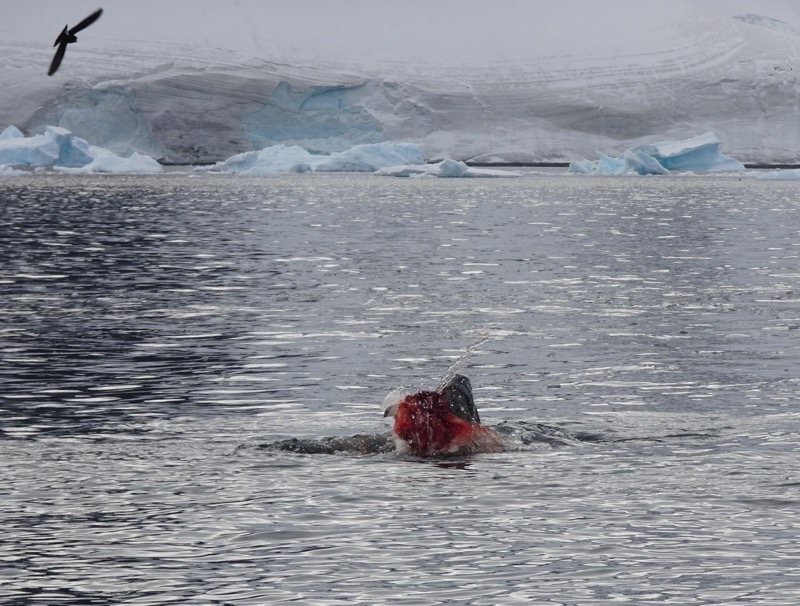
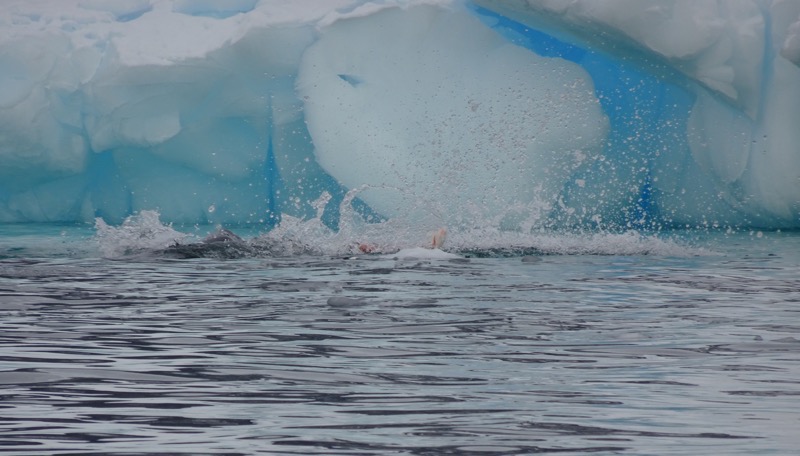
Photo by Jean on her iPad: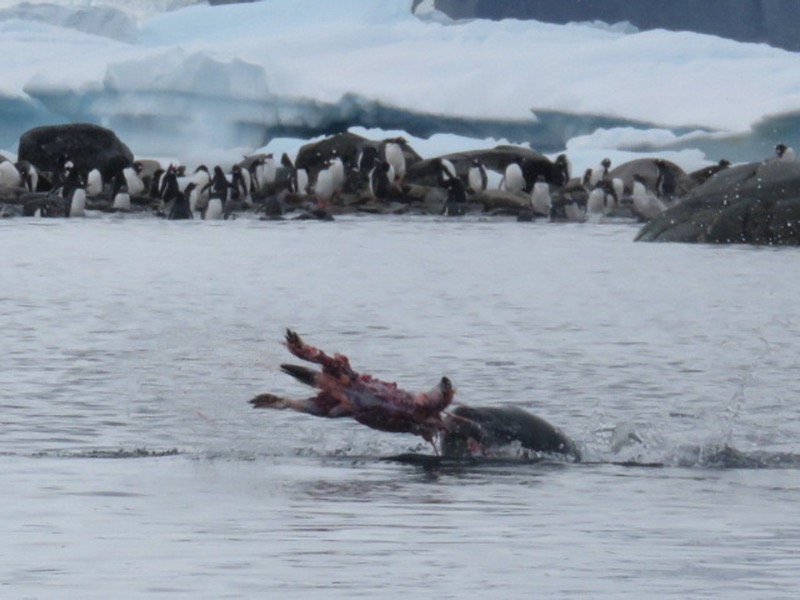 Photo by Arthur:
Photo by Arthur: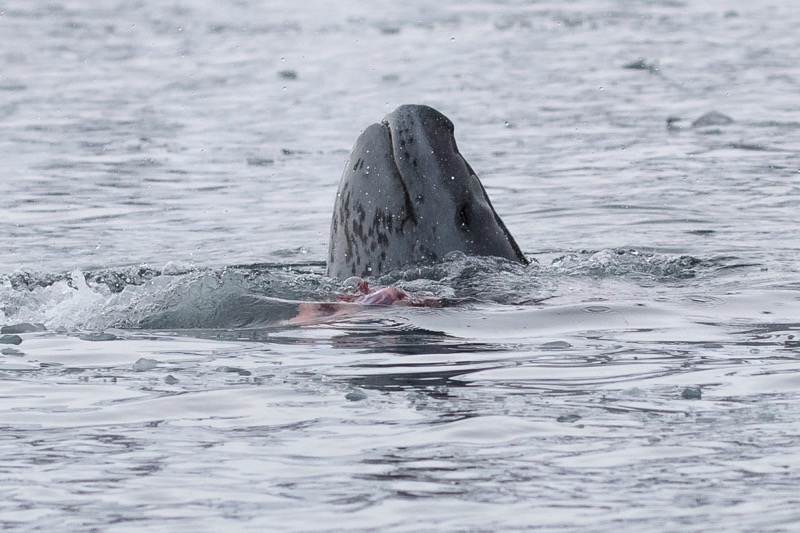 Three Photos by Scotty:
Three Photos by Scotty:
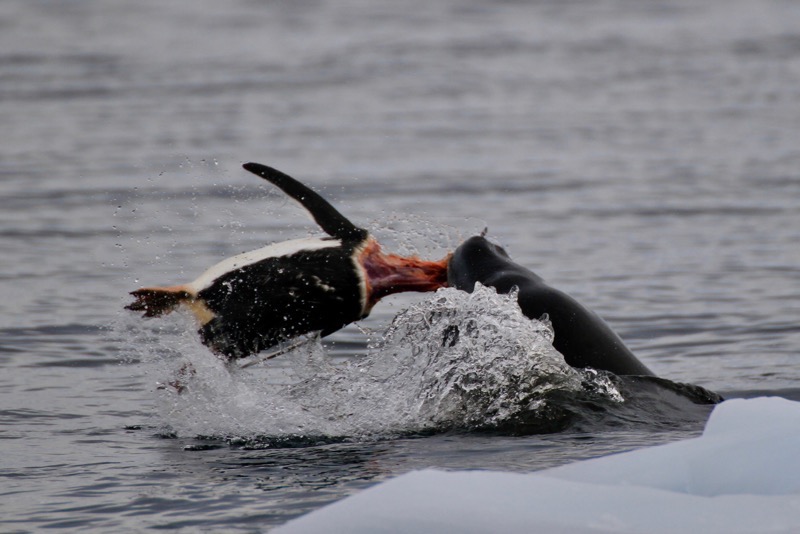
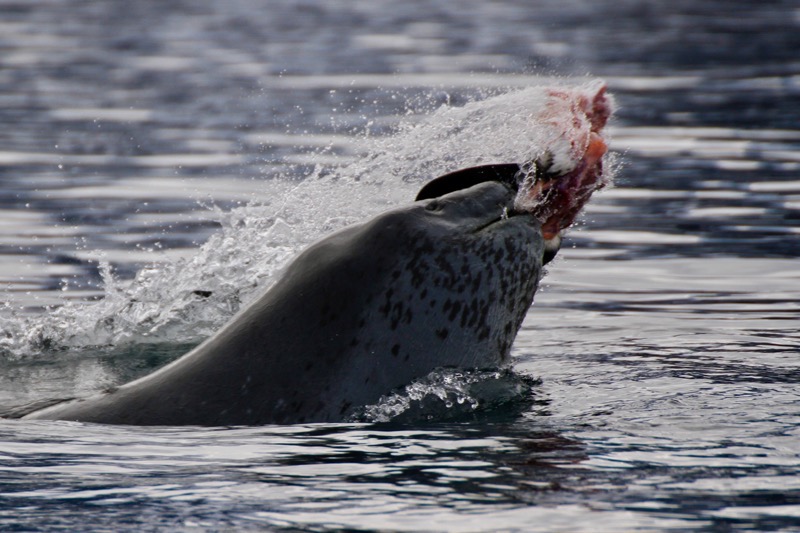
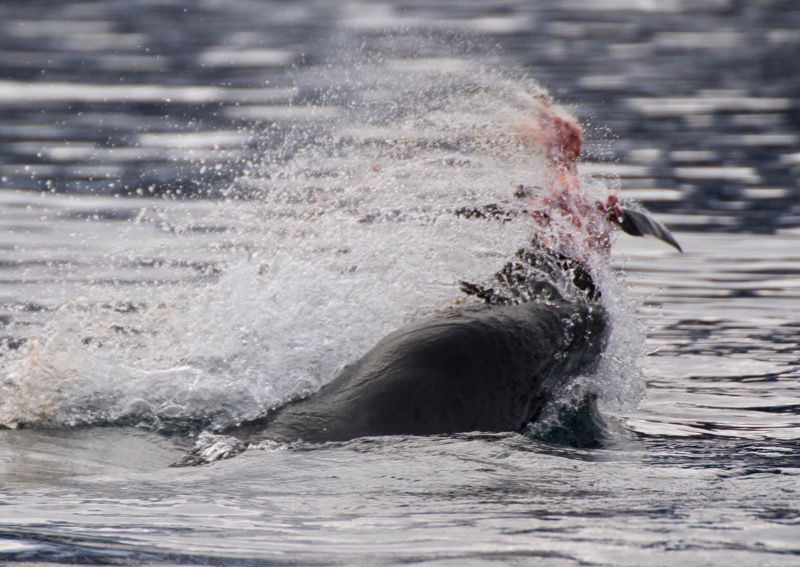
Poor penguin. :/ After the excitement of the leopard seal we had a serene cruise around the bay before returning to the ship for lunch.
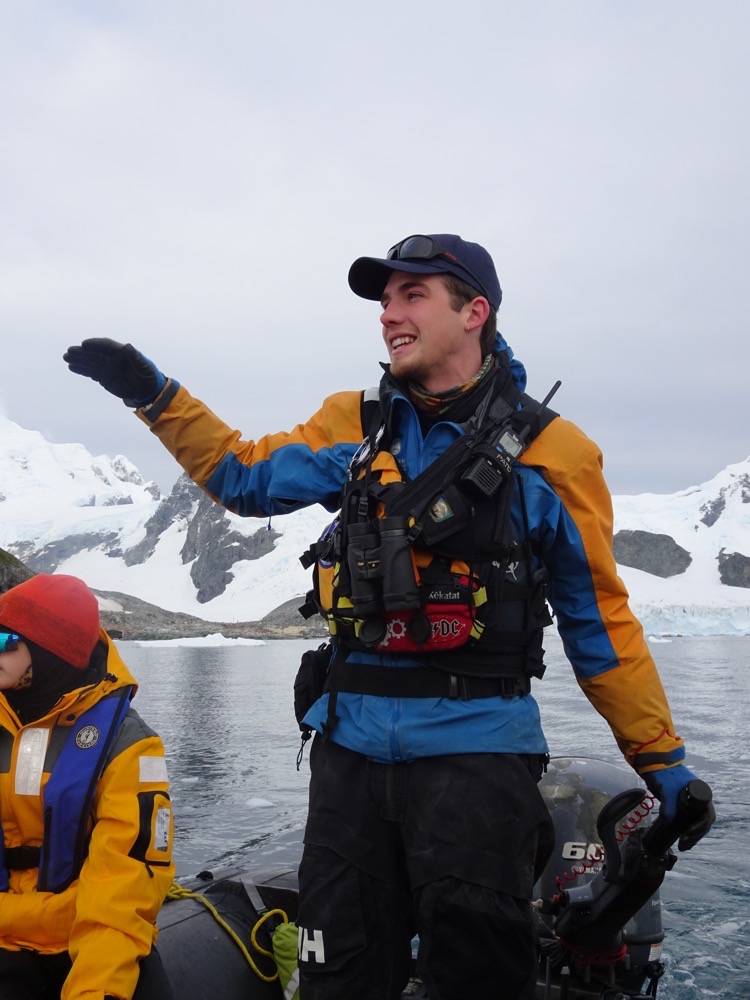
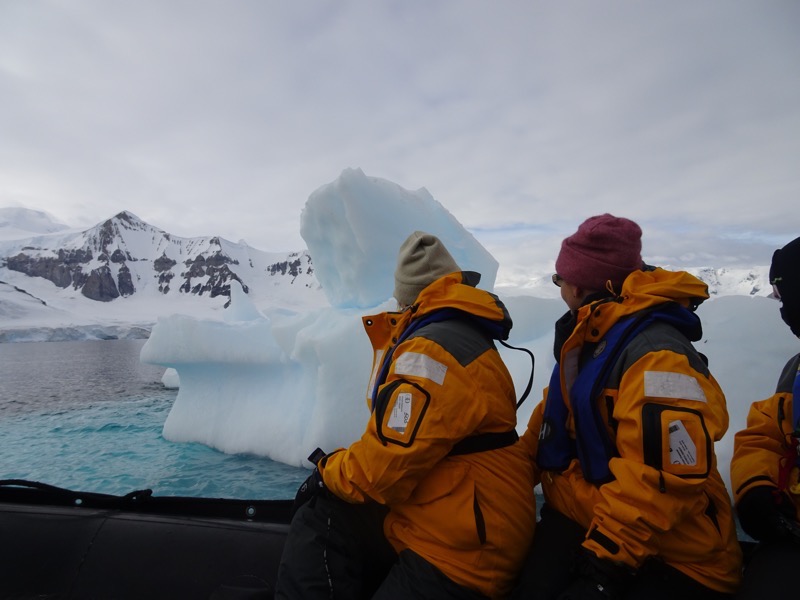
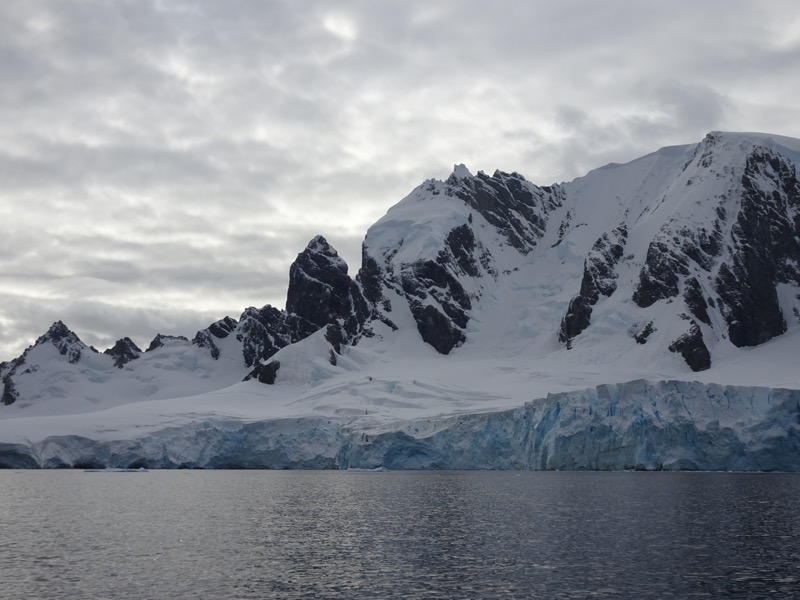 We saw some whales this morning – but they were mostly ‘logging’… which is basically sleeping. Whales do the unihemispherical sleeping thing too, so they float along, with half their brain asleep just staying afloat and breathing. They came very close to our zodiac but they were not very active.
We saw some whales this morning – but they were mostly ‘logging’… which is basically sleeping. Whales do the unihemispherical sleeping thing too, so they float along, with half their brain asleep just staying afloat and breathing. They came very close to our zodiac but they were not very active.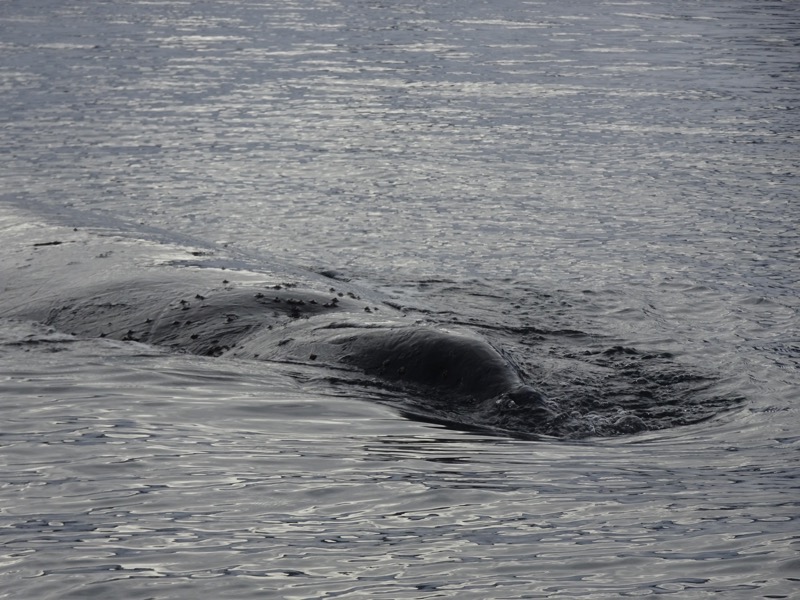
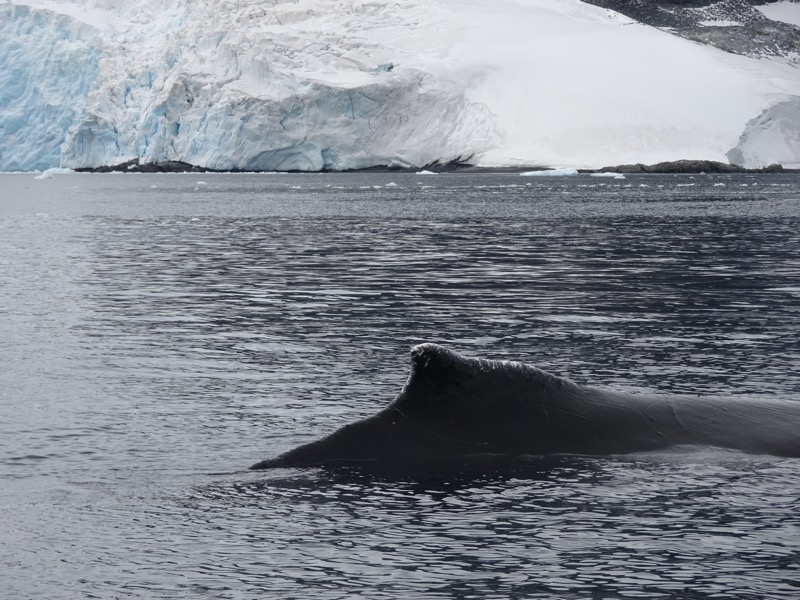 I can’t get over the colour of the water and the ice… it’s just gorgeous.
I can’t get over the colour of the water and the ice… it’s just gorgeous.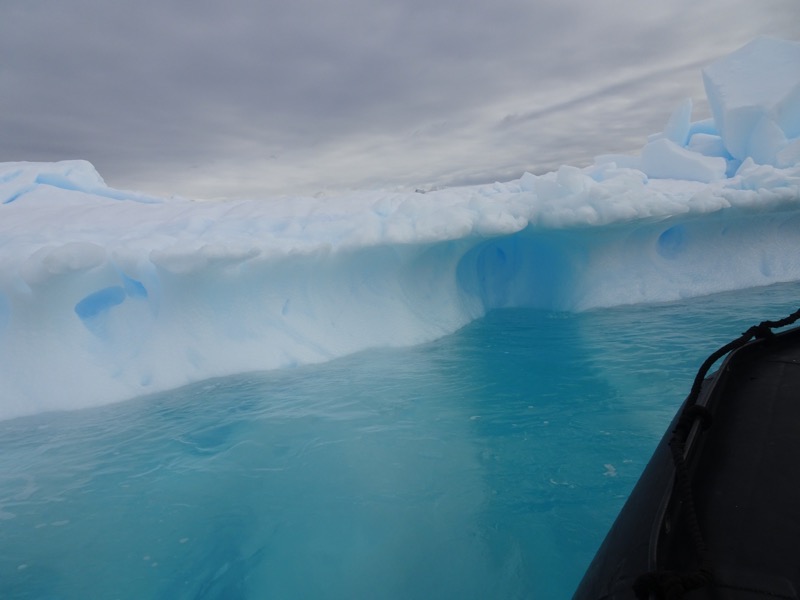
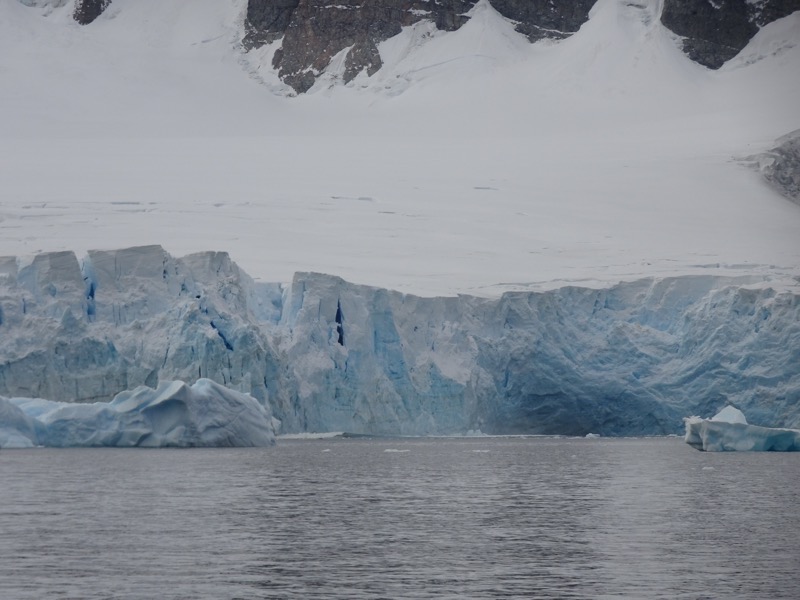
After lunch we were supposed to stop into Neko Harbour which lies on the eastern shore of Andvord Bay on the actual Antarctic continent itself. The land stops we have done so far are on small islands off the Peninsula. Neko Harbour is approximately 11k south of the Errera Channel and was named for the floating whale factory ship, ‘Neko’ which often operated in this bay. Neko operated here between 1911-1912 and again from 1923-1924 as well as in the South Shetland Islands and along the Antarctic Peninsula. We were pretty excited about our first continent landing site, and of course, the roughly 250 breeding pairs of Gentoo penguins that are known to reside in Neko Harbour – can’t get enough of those cute little penguin dudes.
However… Neko Harbour was completely iced in and we couldn’t make our way into the Harbour at all. Which means, as often happens on these expeditions, we had to make a change of plan. Our fearless leader Woody, decided upon a landing point at Brown Argentinian Research Station in Paradise Harbour instead – which is also a continental landing site. This afternoon our group was zodiac cruising first and then heading to the island to clamour about to a lookout spot after that.
We had the best zodiac crusing with Justine this afternoon! No sooner were we in the water and went for about a kilometre or two and suddenly we were surrounded by over a dozen humpback whales who were all diving for krill to feed. In doing so they were giving us lovely displays of their enormous tails as they dived under the surface. Each whale’s tail is unique and the shape, ridges, marks and colouration is used by researchers to identify individual whales and their habits and migration patterns. So we were all on the hunt for good whale tail pictures that could be forwarded to researchers and add to their understanding of different whale pod migration habits.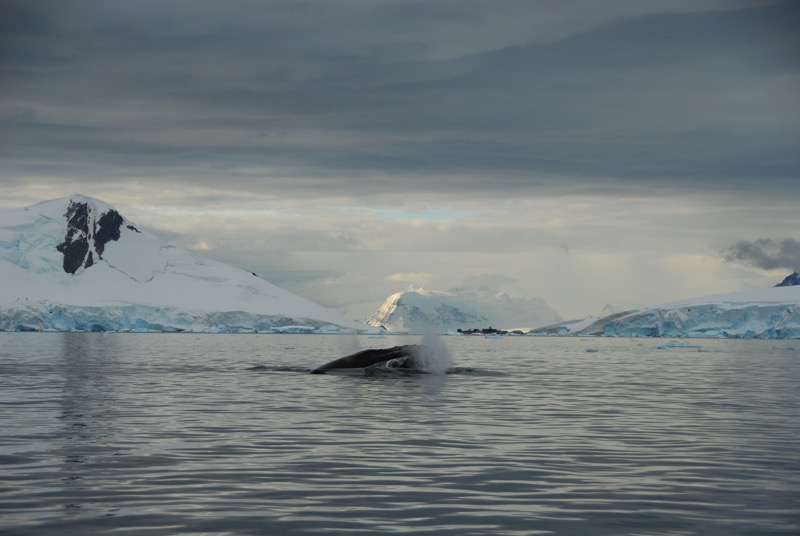
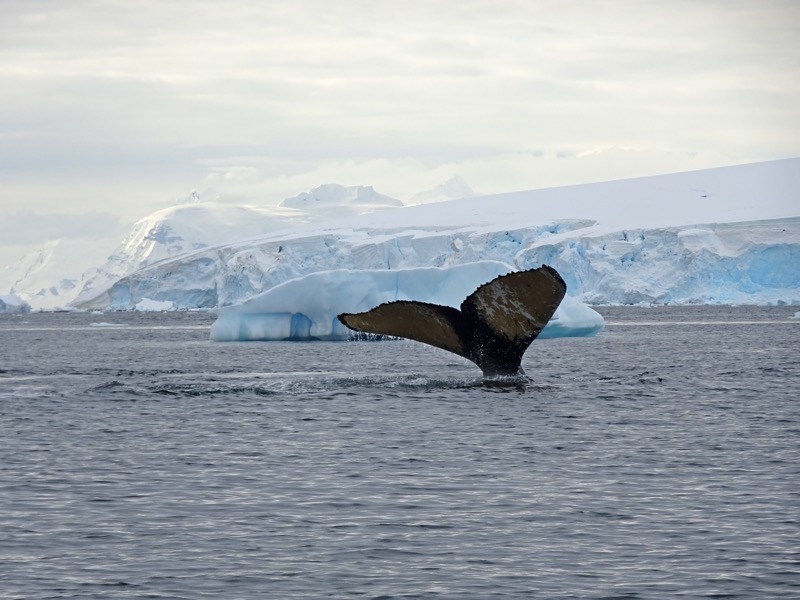
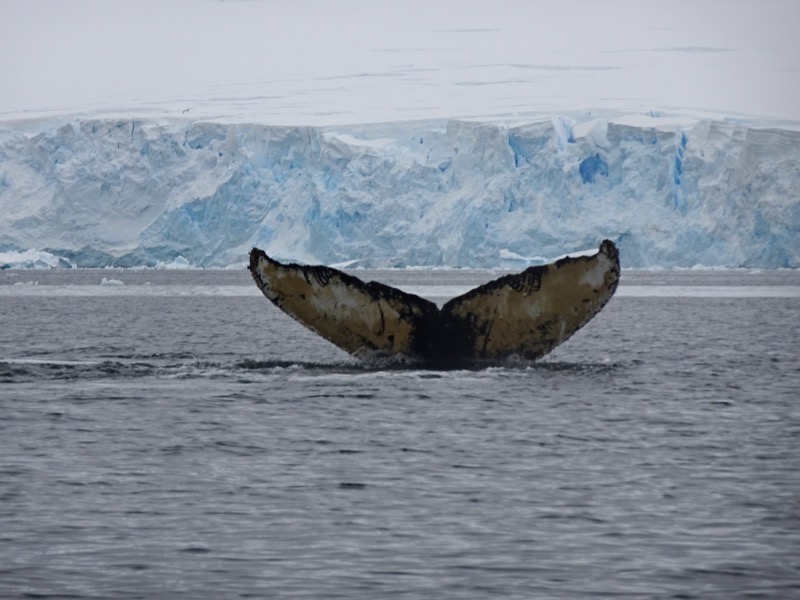
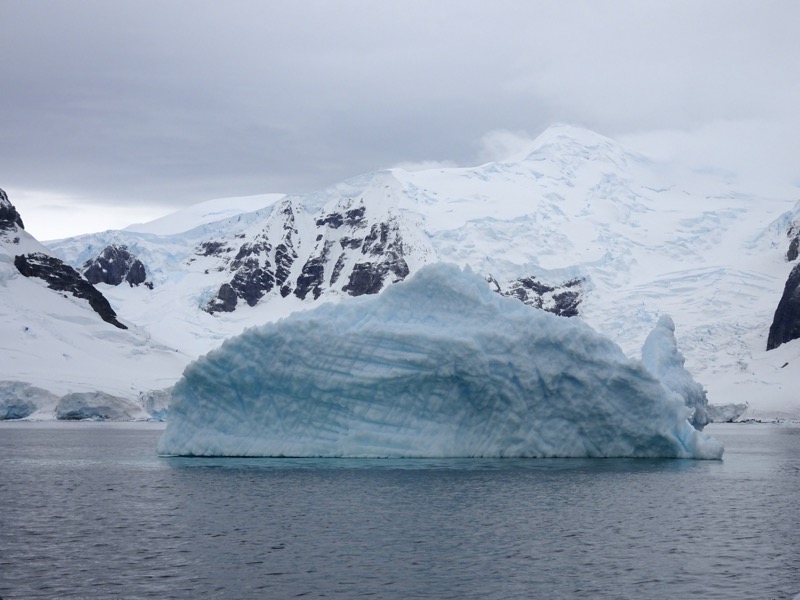
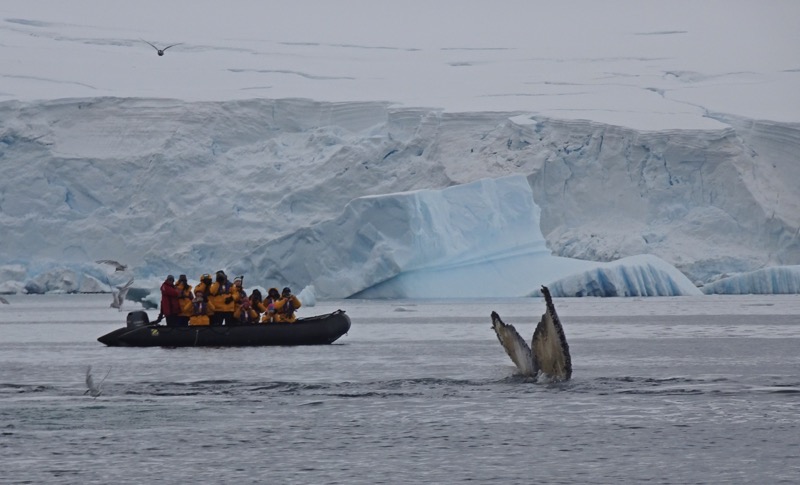
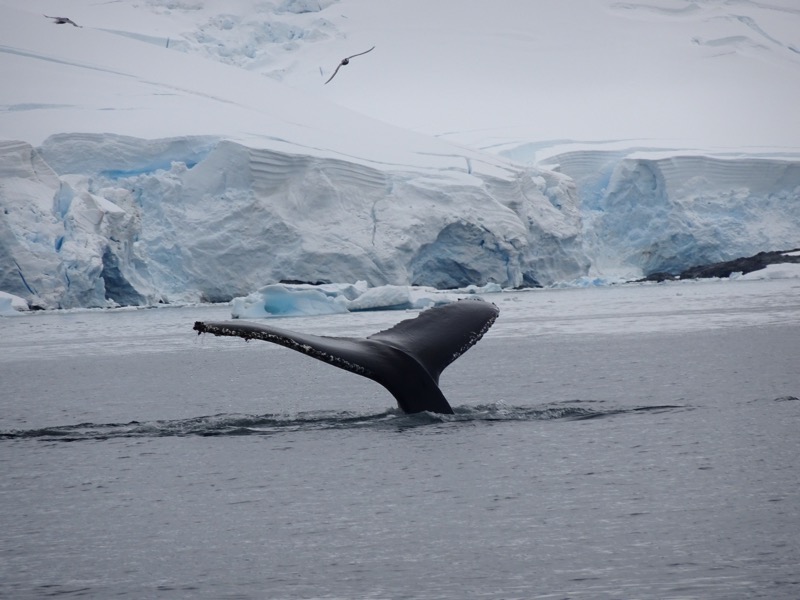
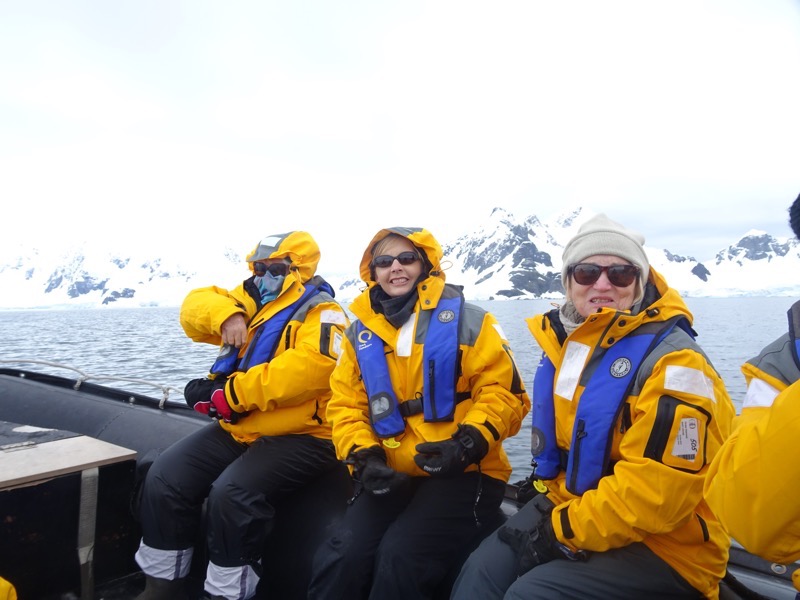
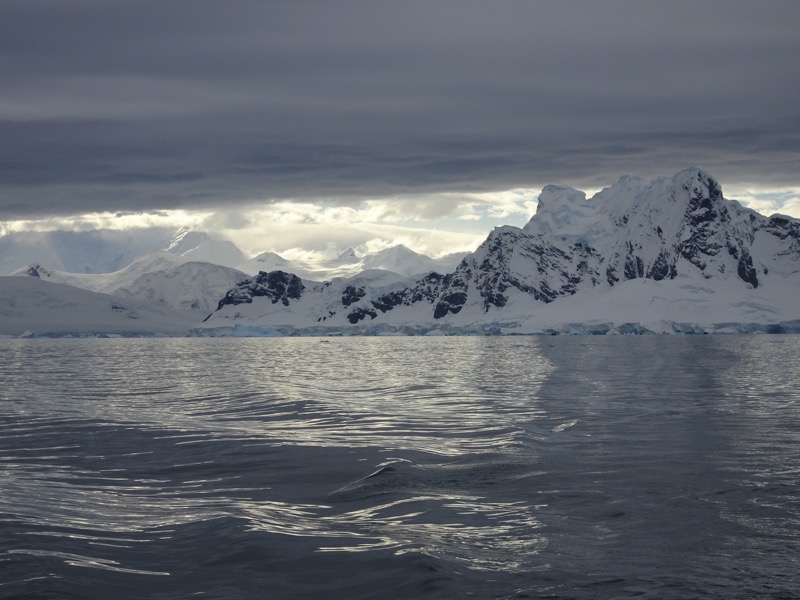 One of the things I have enjoyed most about whale watching here is the silence and awe they evoke when we encounter these enormous gentle creatures – and then the sounds that reverberate through their gigantic bodies when they breathe or move around in the water. They are truly magnificent and I tried to take a short video to capture these deep resonant sounds…
One of the things I have enjoyed most about whale watching here is the silence and awe they evoke when we encounter these enormous gentle creatures – and then the sounds that reverberate through their gigantic bodies when they breathe or move around in the water. They are truly magnificent and I tried to take a short video to capture these deep resonant sounds…
The zodiacs in this pic taken in Paradise Harbour by Acacia really show the scale of the surrounding environment:
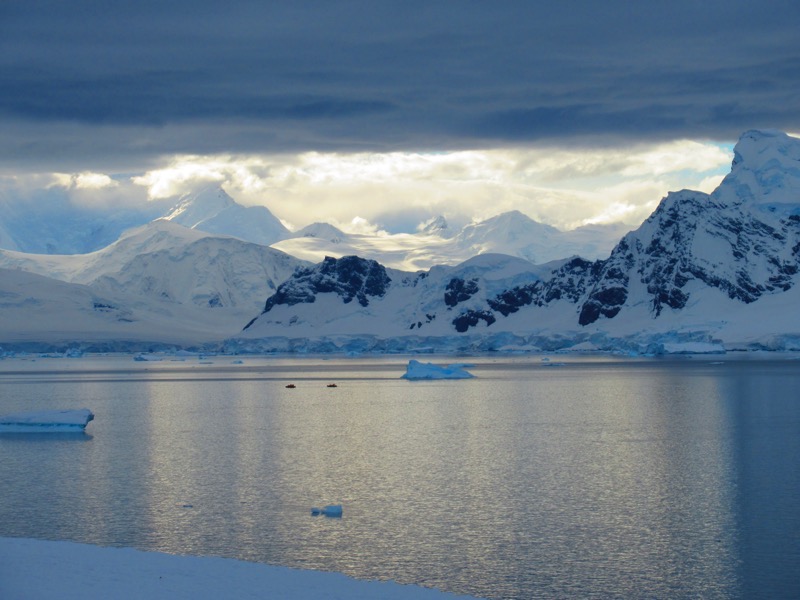 We were all busy watching the whales diving and getting those beautiful tail shots as they curved their bodies and plunged beneath the water when Jean snapped this pick inside the jaws of a humpback – you can see the baleen tendrils that they use to sieve krill when gulp feeding and the soft pink of their upper palate.
We were all busy watching the whales diving and getting those beautiful tail shots as they curved their bodies and plunged beneath the water when Jean snapped this pick inside the jaws of a humpback – you can see the baleen tendrils that they use to sieve krill when gulp feeding and the soft pink of their upper palate.
Photo by Jean: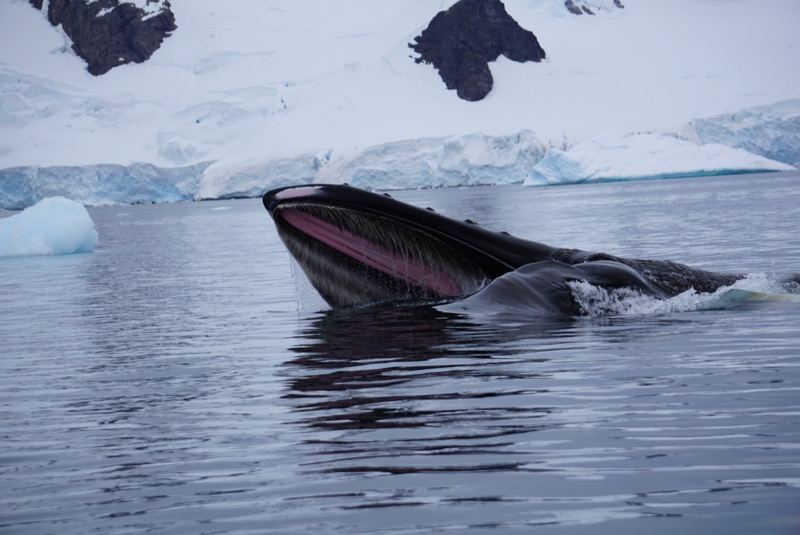
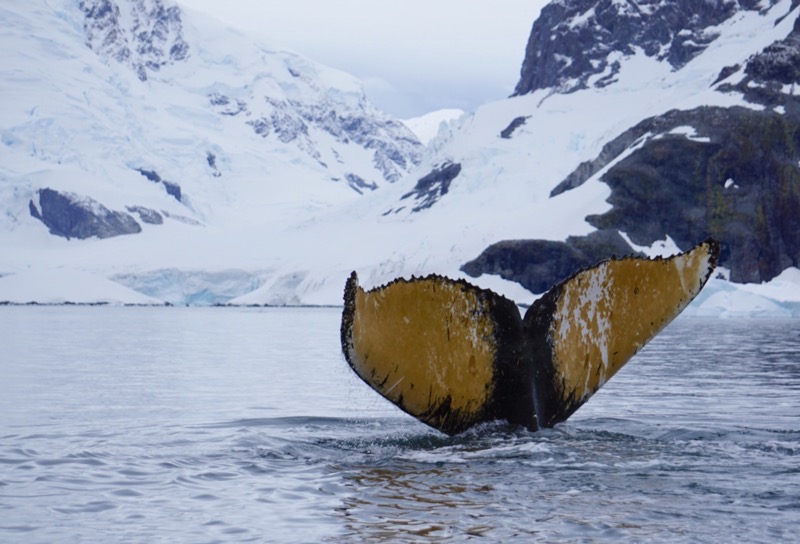
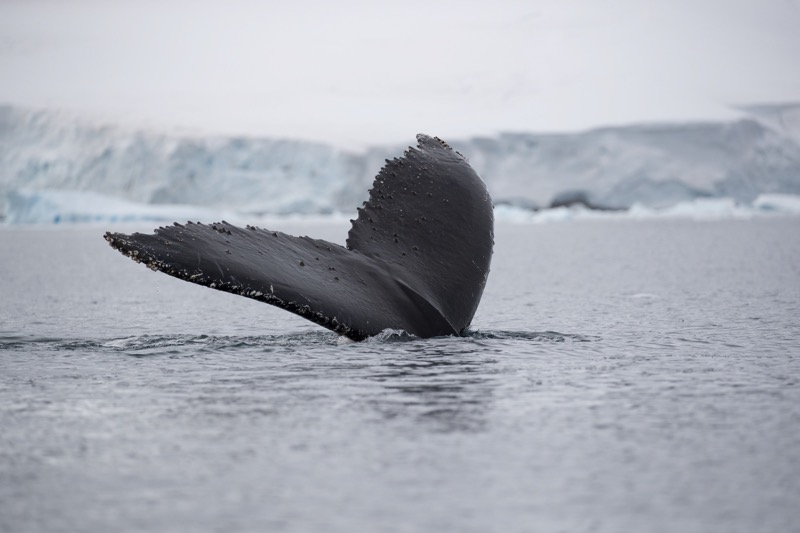 We were all watching these whales as though our heads were on swivels, there were so many of them, and they seemed to be in every direction, and so close to our zodiacs… Finally, one of them breached and we all gasped and held our collective breaths. It was magnificent to see such a huge and majestic animal throwing itself out of the water – and from what scientists can tell, they do it for no other reason than the joy of it. I was too astonished to raise my camera, but thankfully others did… Photo by Chris Moon:
We were all watching these whales as though our heads were on swivels, there were so many of them, and they seemed to be in every direction, and so close to our zodiacs… Finally, one of them breached and we all gasped and held our collective breaths. It was magnificent to see such a huge and majestic animal throwing itself out of the water – and from what scientists can tell, they do it for no other reason than the joy of it. I was too astonished to raise my camera, but thankfully others did… Photo by Chris Moon: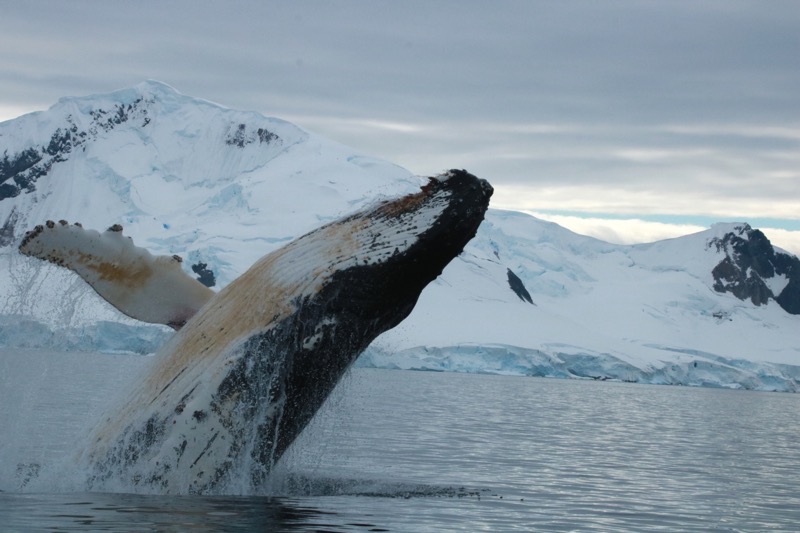
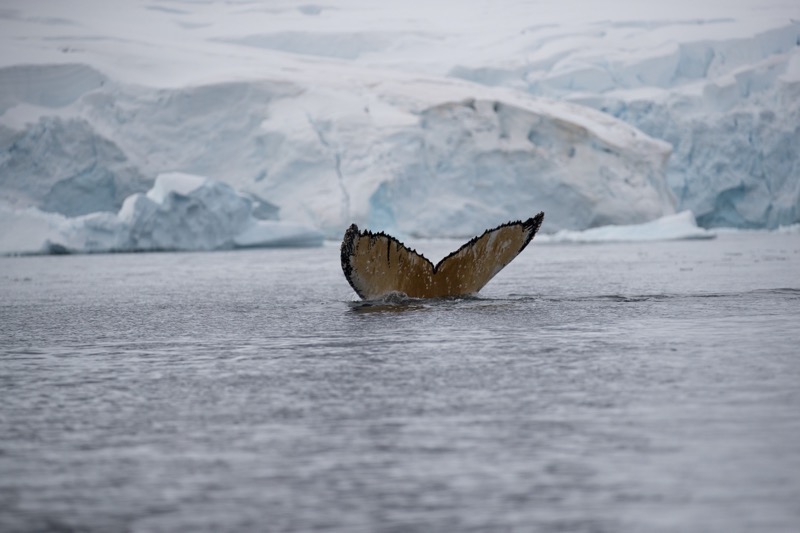 Three photos taken in Paradise Harbour by Pato:
Three photos taken in Paradise Harbour by Pato: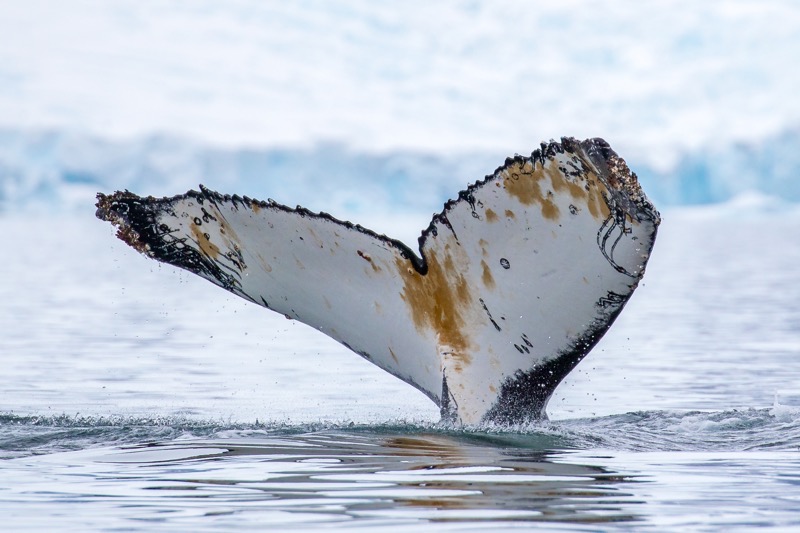
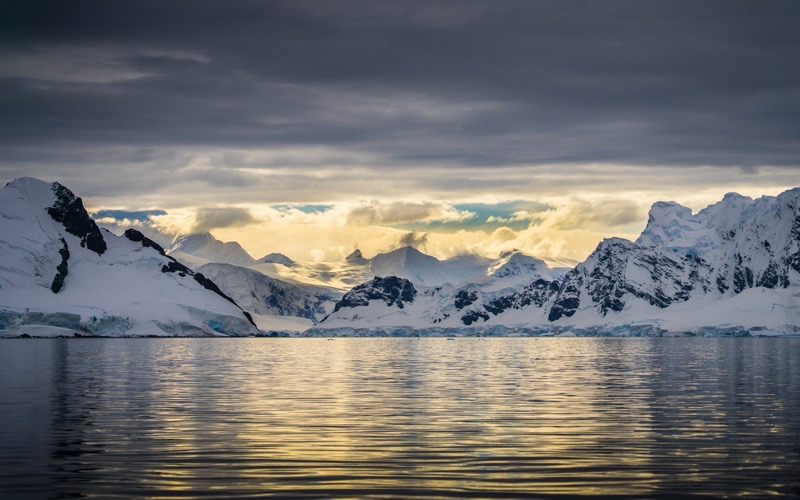
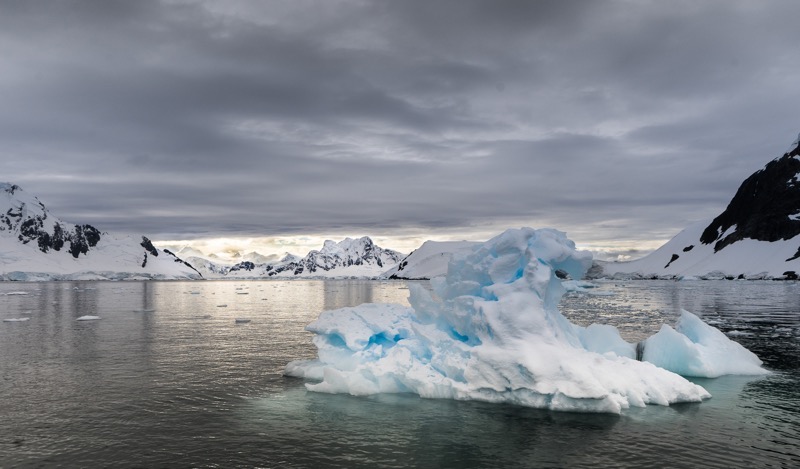
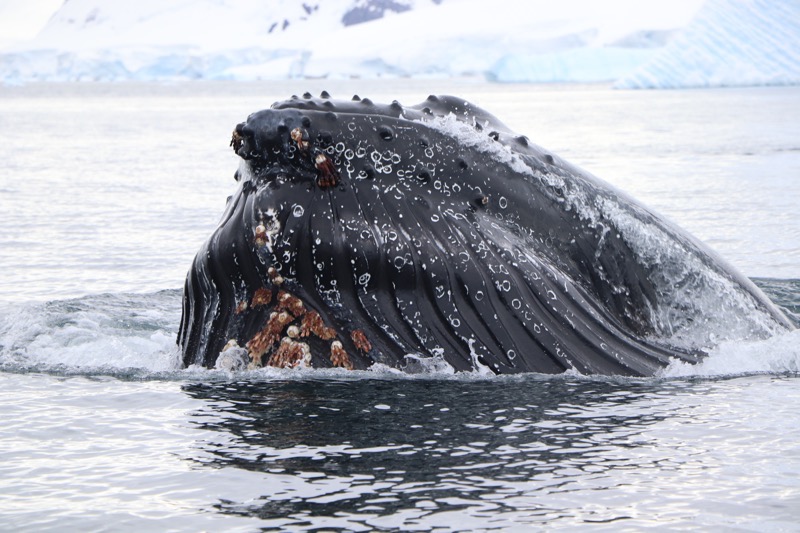
After our wonderful zodiac cruise with Justine, we went to Brown Station, which has a high lookout point that we were able to venture up to. I was again lamenting my oversized clown shoes – even more so today (as if that were humanly possible), as we were traversing very hard icy, and therefore slippery, terrain. I tried hard to scout out a path of fresh crunchy snow to walk on where possible, as I was sliding around inside my boots and on the ice, which led to predictably, hurting both my knees rather painfully by the end of the afternoon. But there were more penguins and absolutely stunning views to make up for it.
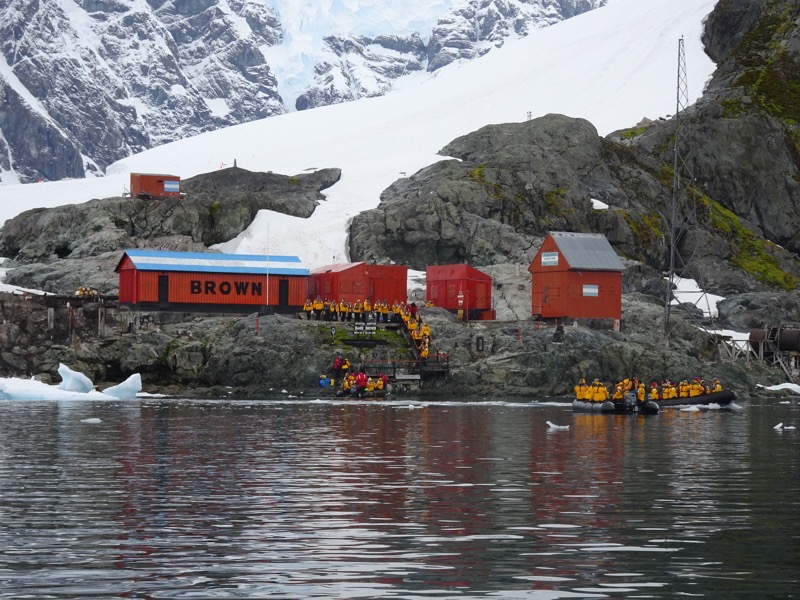
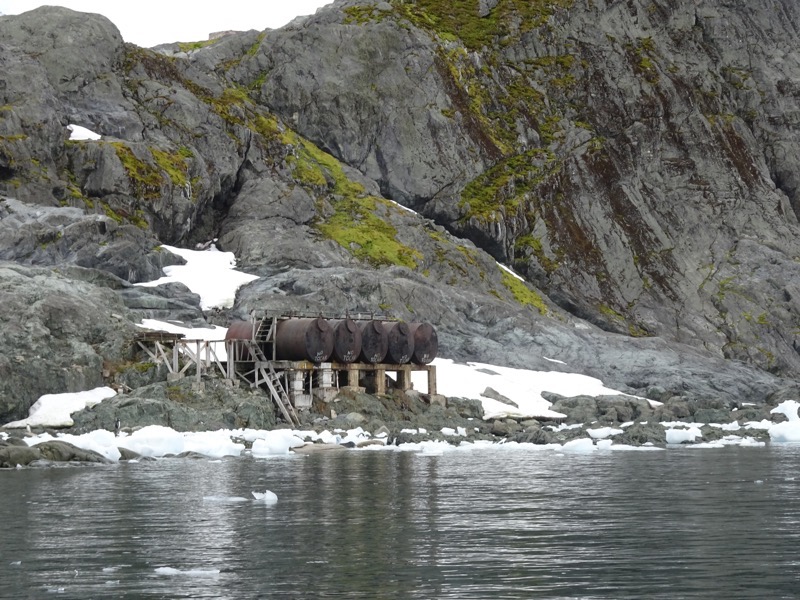
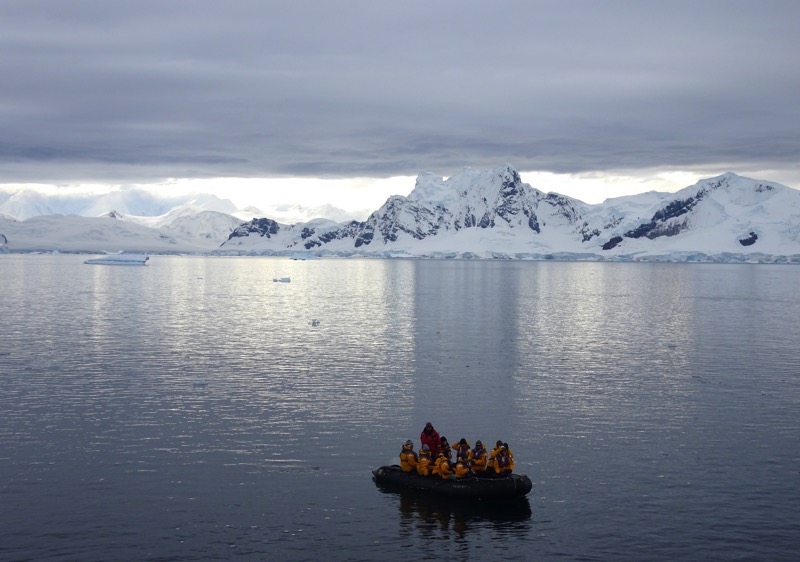
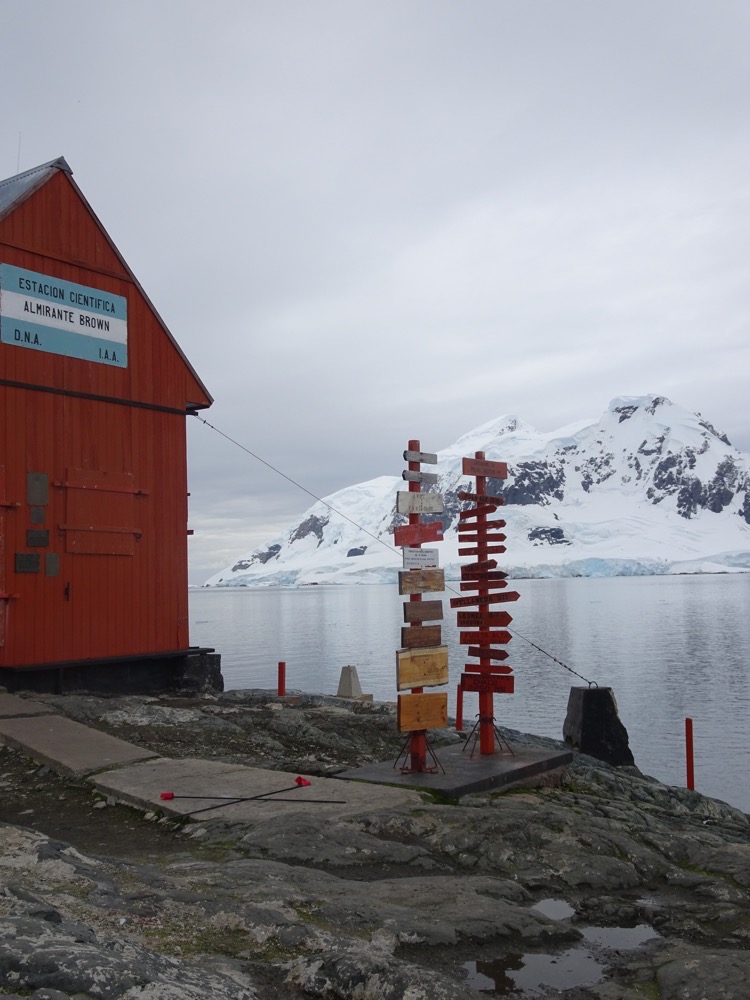 We were walking through the snow and talking about snow angels – as you do when you are Australian and you’re not accustomed to seeing a lot of snow – and it turns out Trish had never made a snow angel before. I had, in Switzerland with BluddyMary back in ’95, and Mum had I think she said in Nepal around that time… so that meant it was Trisha’s turn – and you know if you are going to make a snow angel for the first time, why not Antarctica?! 🙂
We were walking through the snow and talking about snow angels – as you do when you are Australian and you’re not accustomed to seeing a lot of snow – and it turns out Trish had never made a snow angel before. I had, in Switzerland with BluddyMary back in ’95, and Mum had I think she said in Nepal around that time… so that meant it was Trisha’s turn – and you know if you are going to make a snow angel for the first time, why not Antarctica?! 🙂
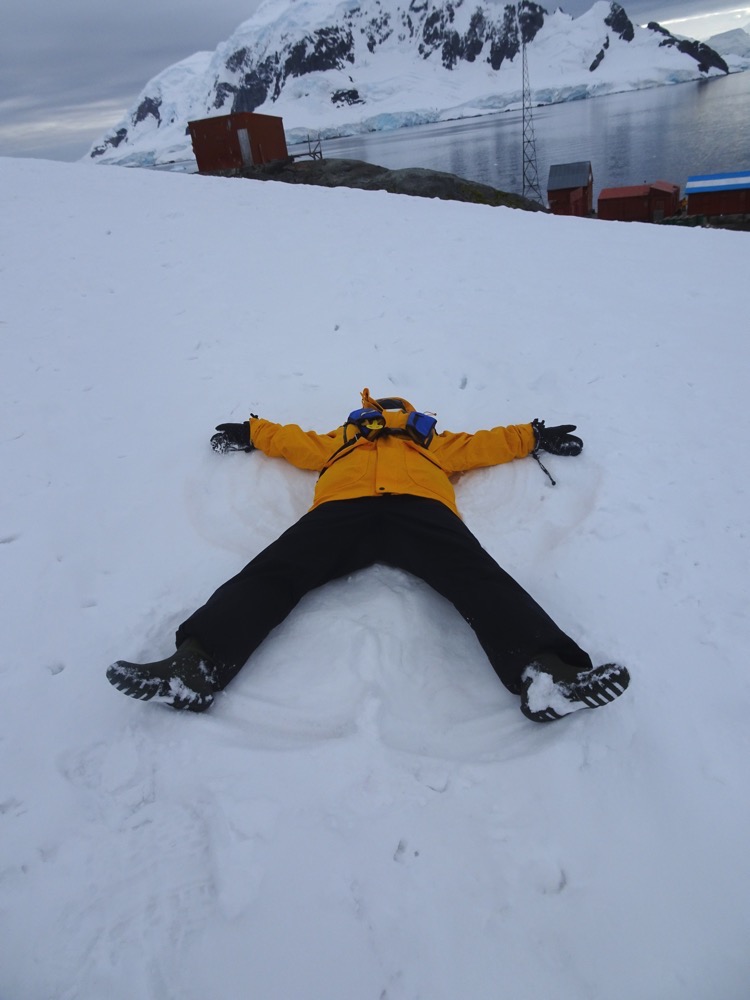 We got to the top of the lookout and it was a positively stunning view down to the harbour. The water is so calm and was offering beautiful reflections. We are hoping for some clearer weather over the coming days, but I have to say that for photography, this cool, moody and ‘romantic’ light is wonderful.
We got to the top of the lookout and it was a positively stunning view down to the harbour. The water is so calm and was offering beautiful reflections. We are hoping for some clearer weather over the coming days, but I have to say that for photography, this cool, moody and ‘romantic’ light is wonderful.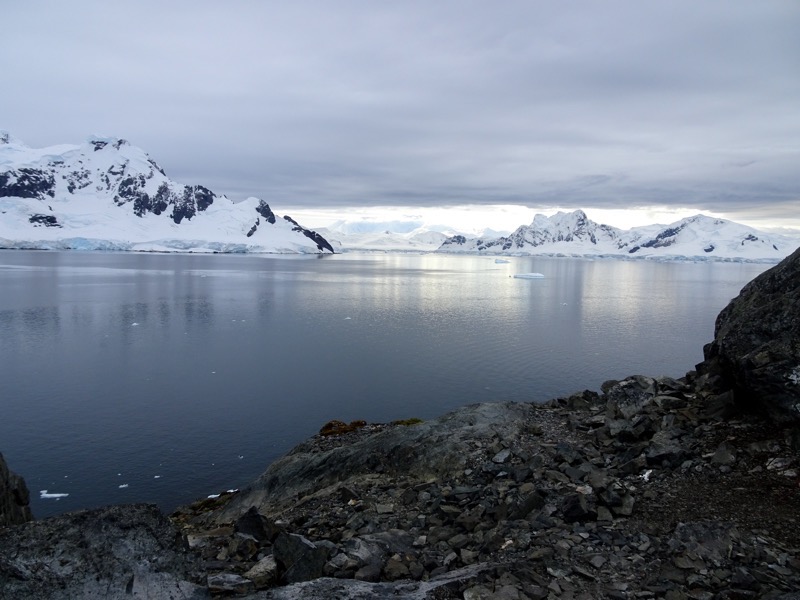
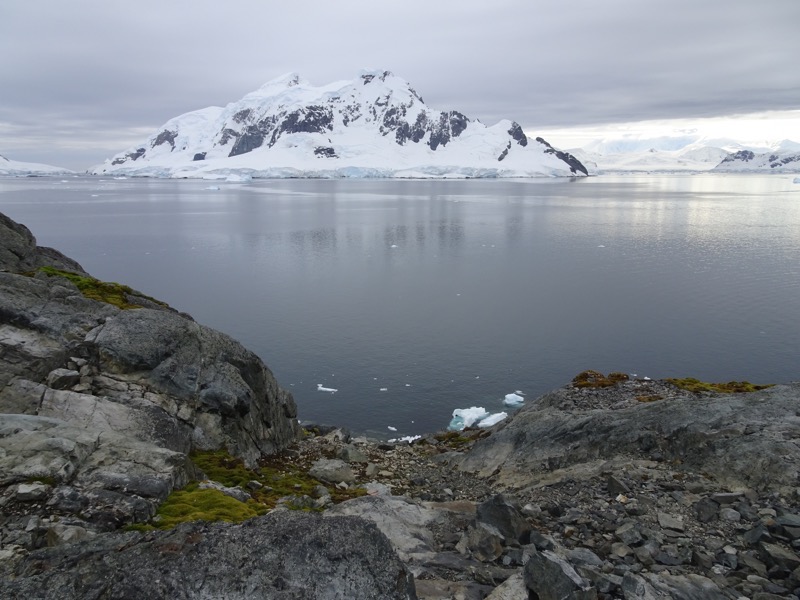
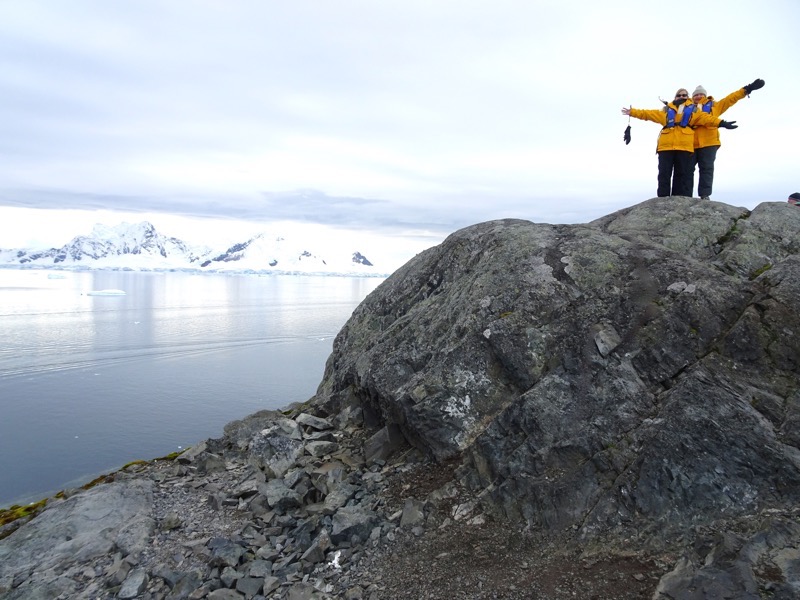
Once we were back on board, it was a little time to clean up and recover from out onshore exertions before we were off for the daily debrief and recap and then another wonderful dinner. Tonight, Federico is giving an informal talk “Confessions of a True Argentine Tango Dancer”.
As we sailed out of Paradise Harbour, we saw some glimpses of blue skies and a promise of what Antarctica would look like if we had a favourable change in weather.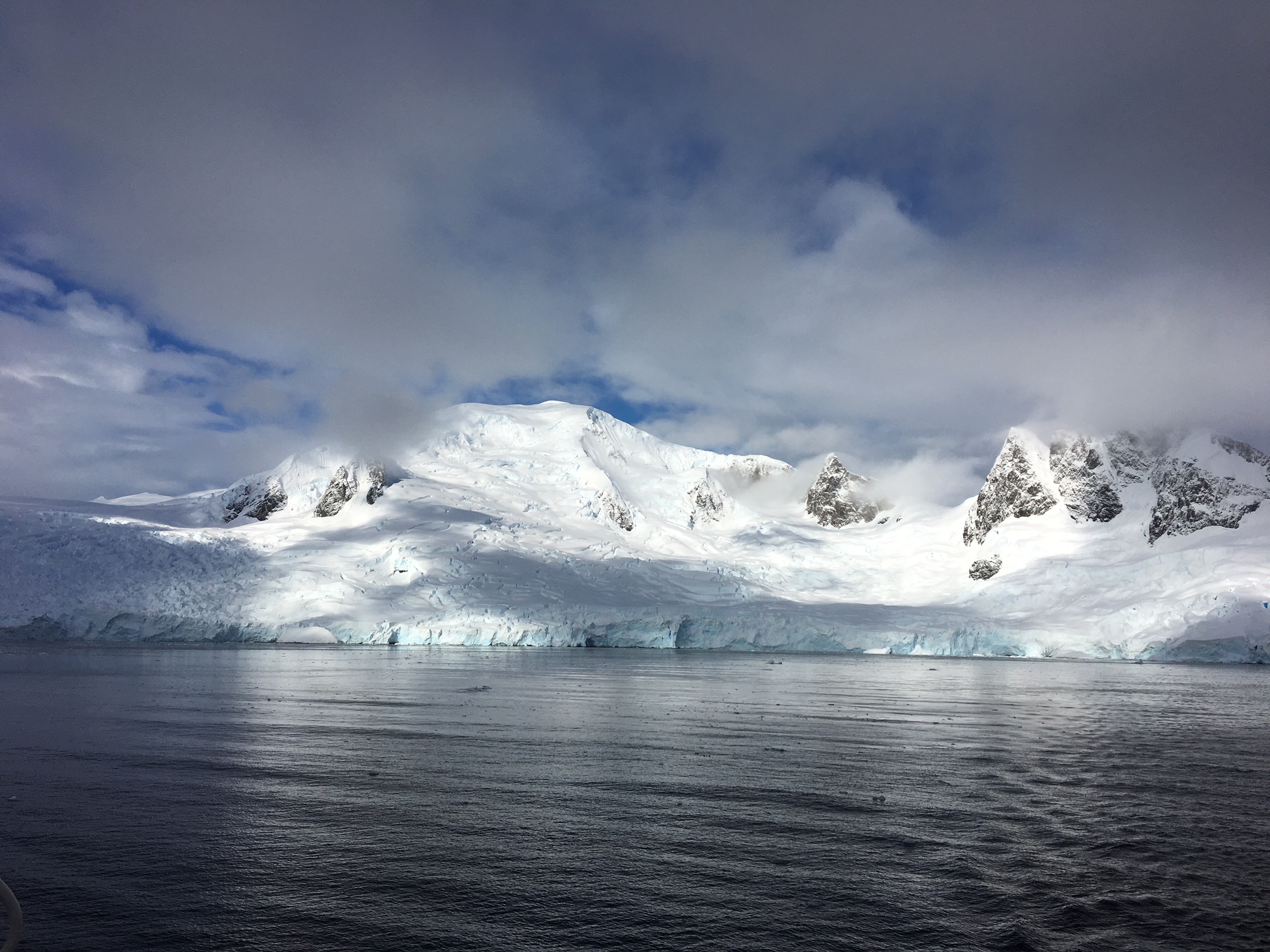
Obviously, early explorers came here under very conditions than those we are able to experience now. One of the things our Expedition Team members have been impressing on us is the fact that those very early expeditions lacked photography. They were unable to simply take photographs home to show people the amazing sights they were greeted with here at the ‘Bottom of the World, instead they made do with paintings and written descriptions. Many explorers expressed themselves in poetry – and we are being encouraged to compose our own poems. So far we have come up with this over dinner:
An Antarctic Valentine
Snow is white
Ice is too
Penguins are cute
and so are you!
What do you think?

oh I get so excited just looking at your fantastic photography .And I have just been watching Worlds biggest storms , thank goodness you didn’t have one of those massive icebergs break off eh xxx